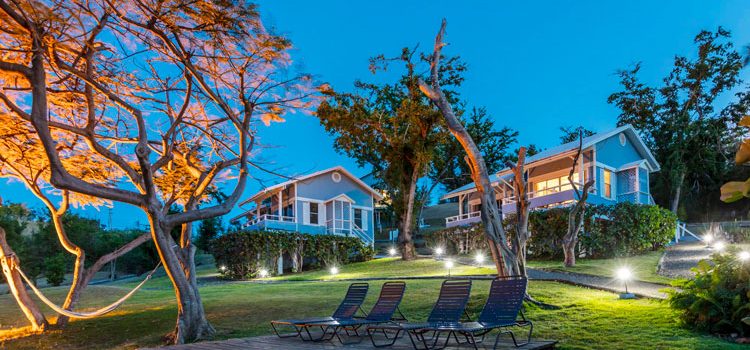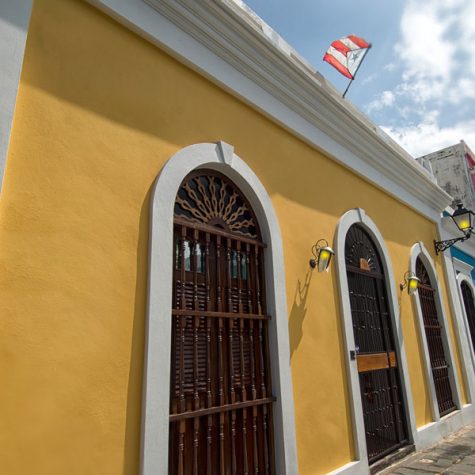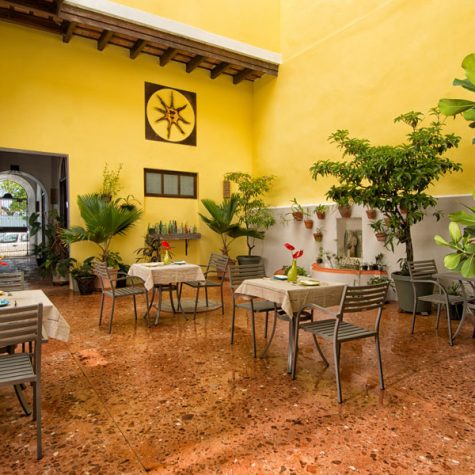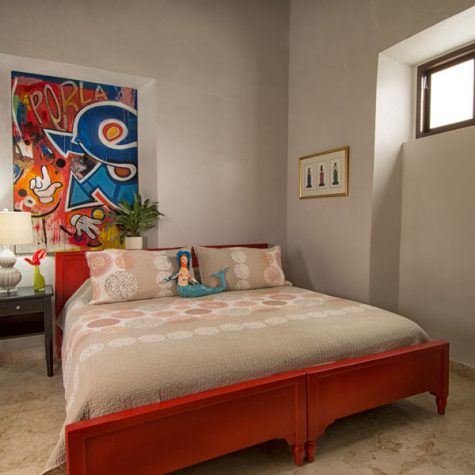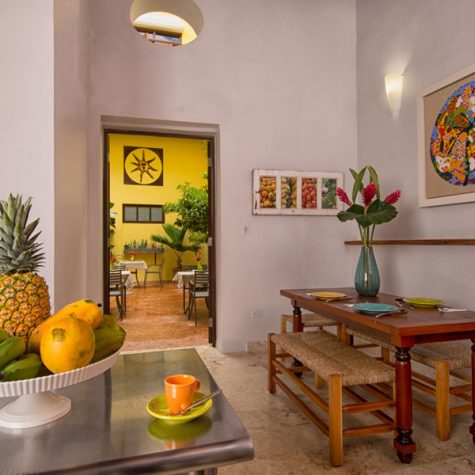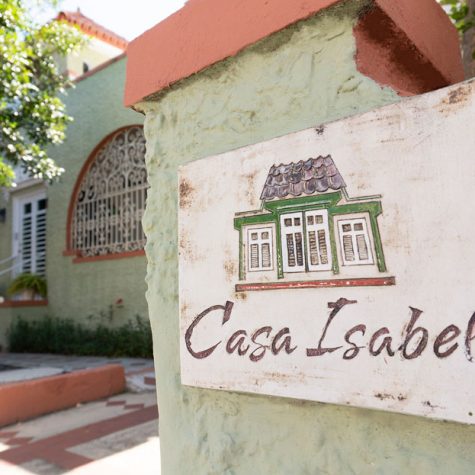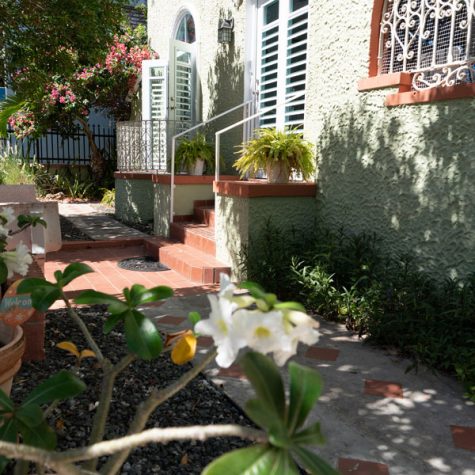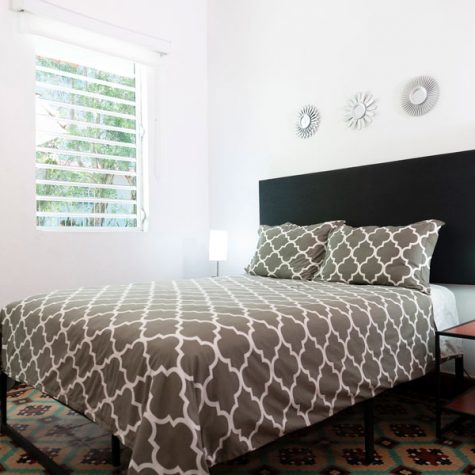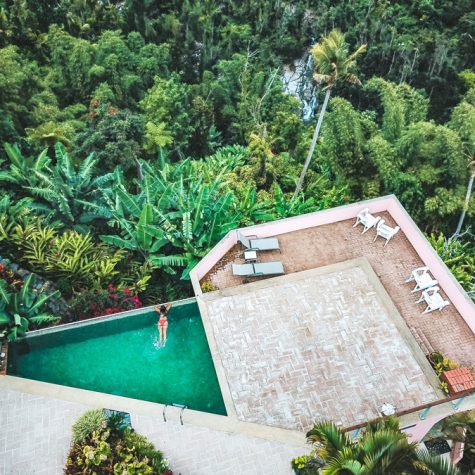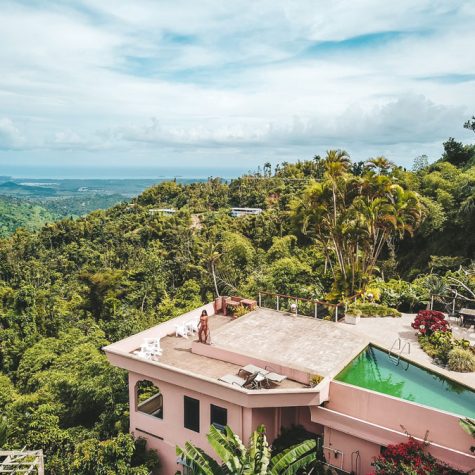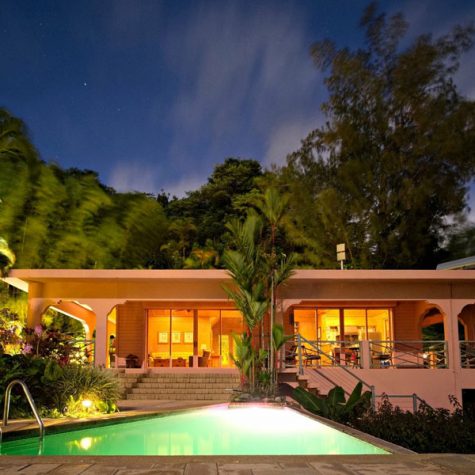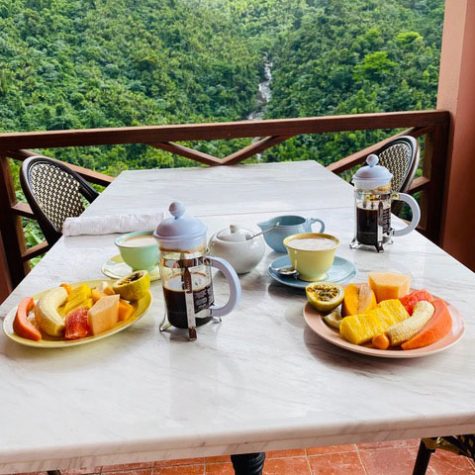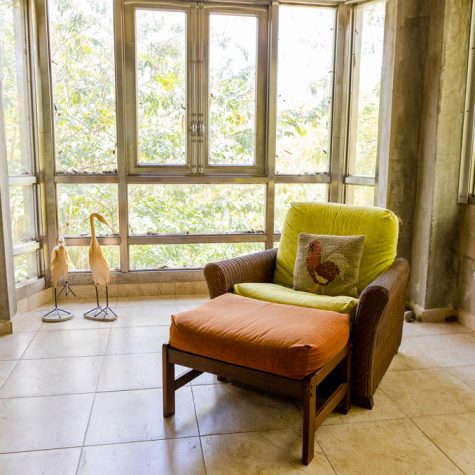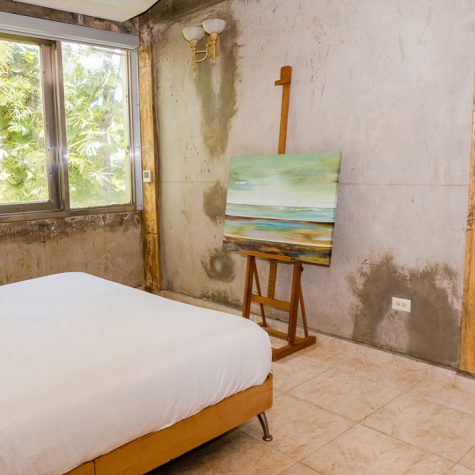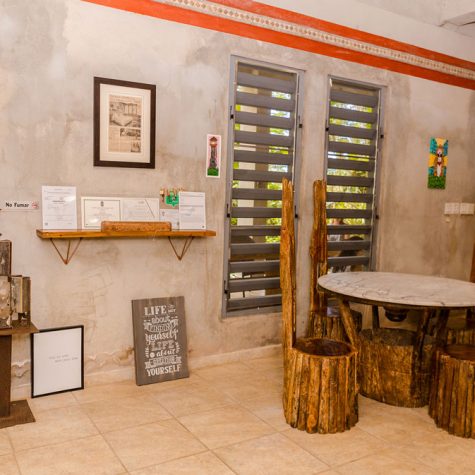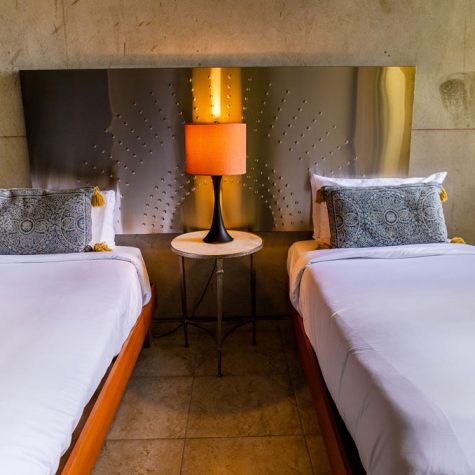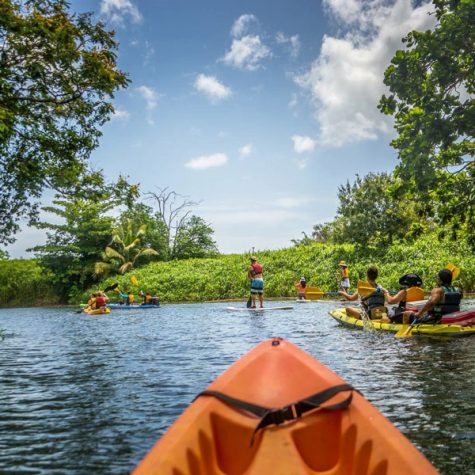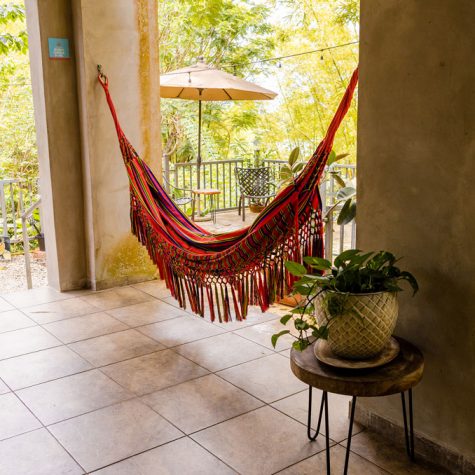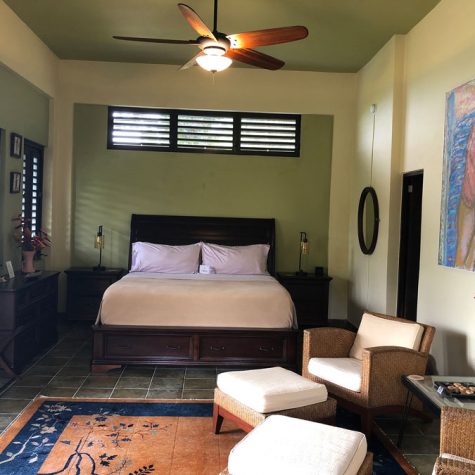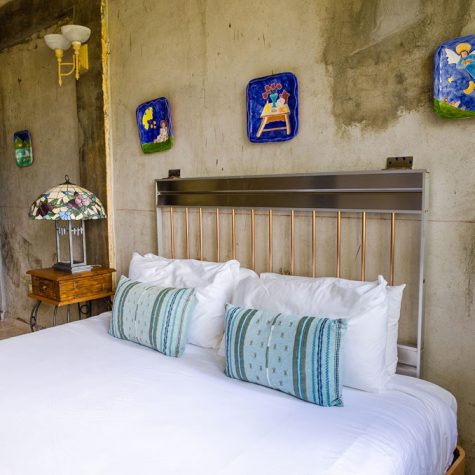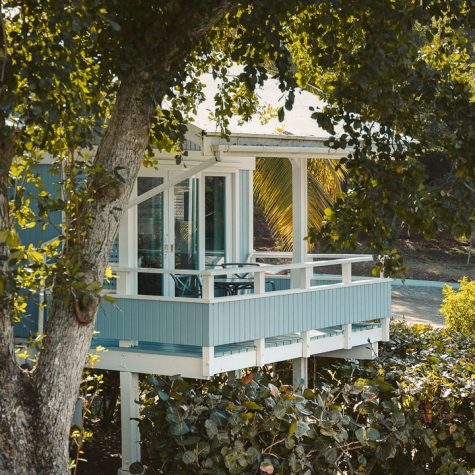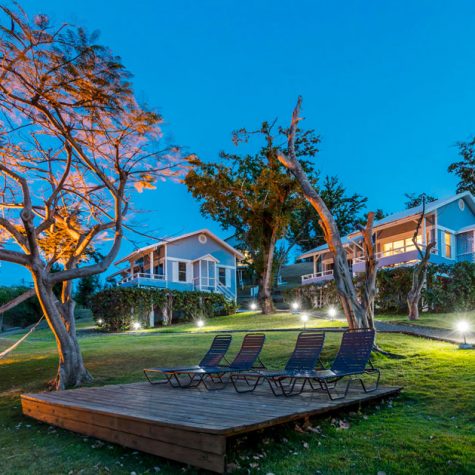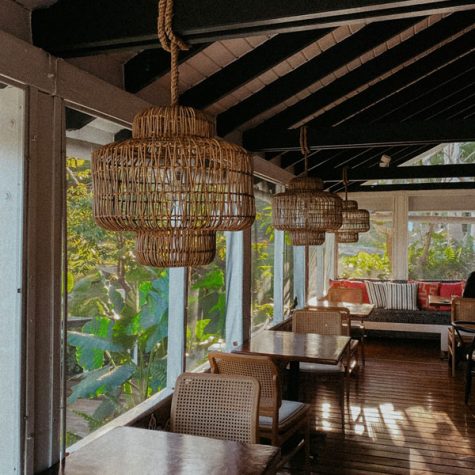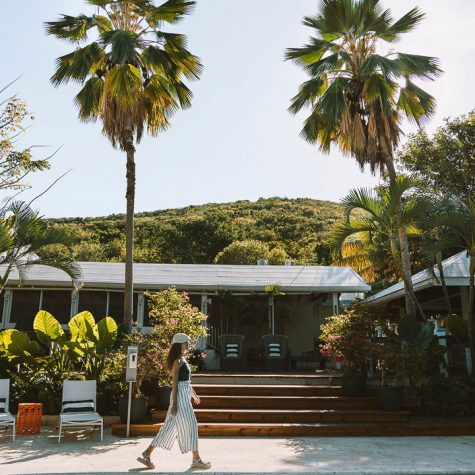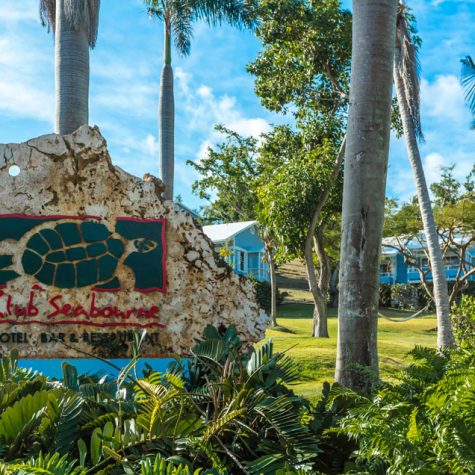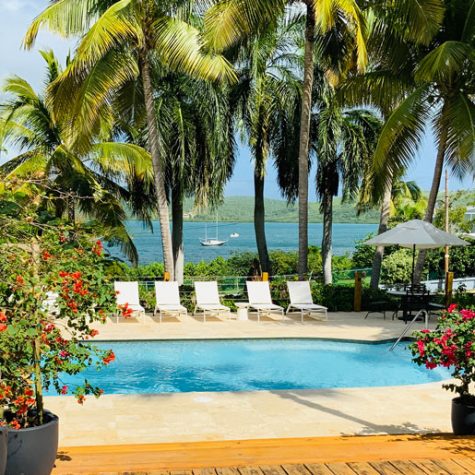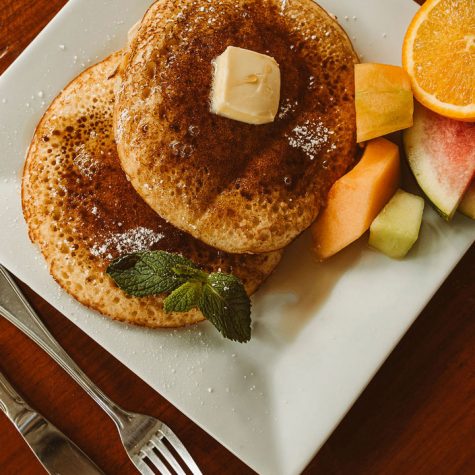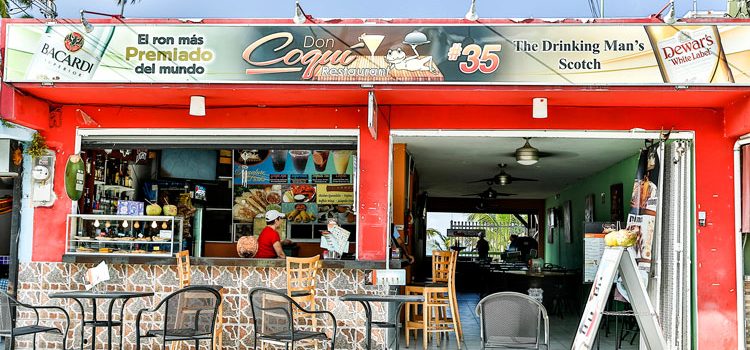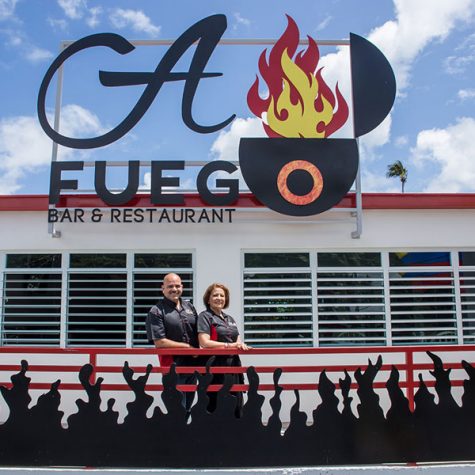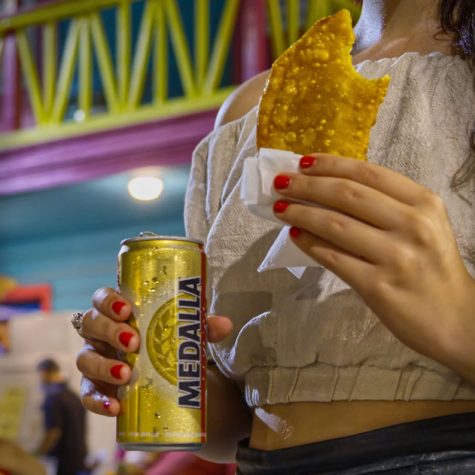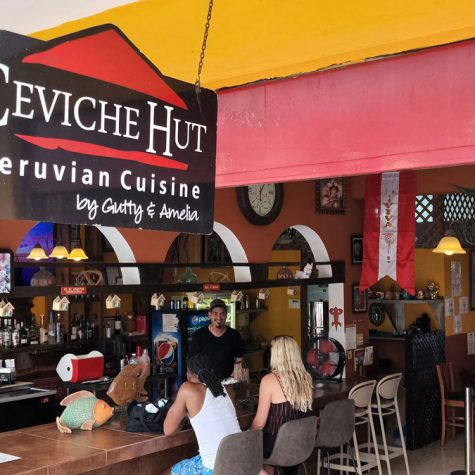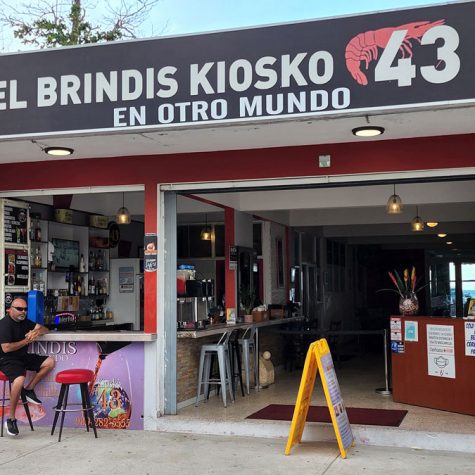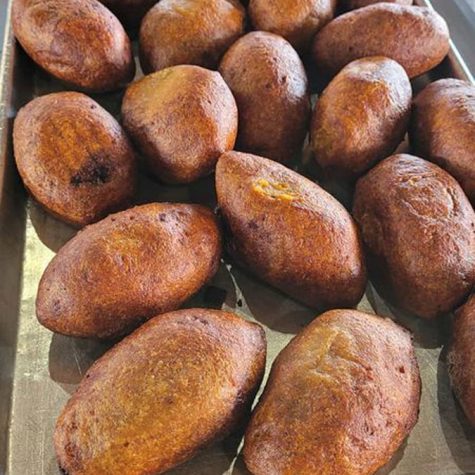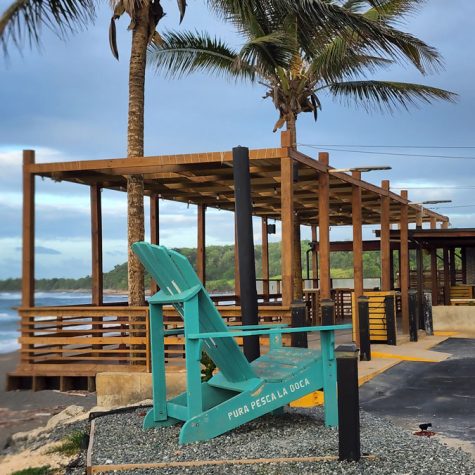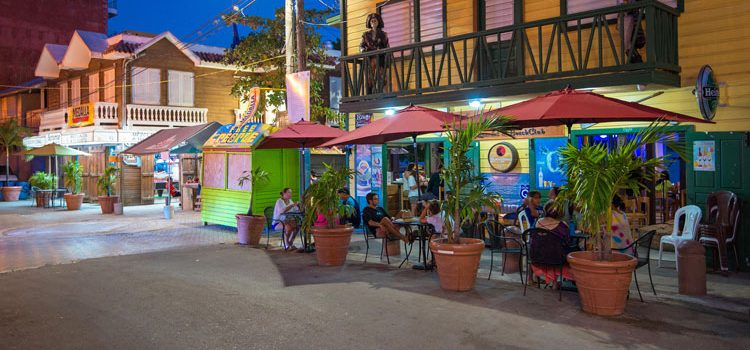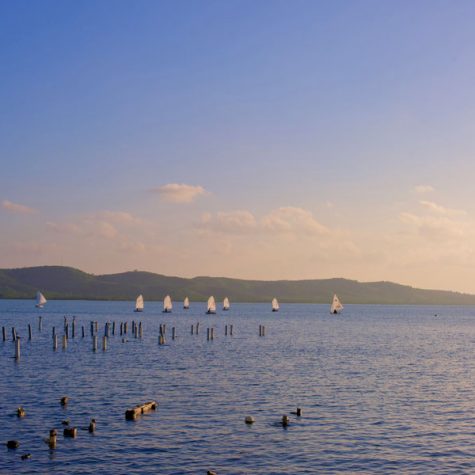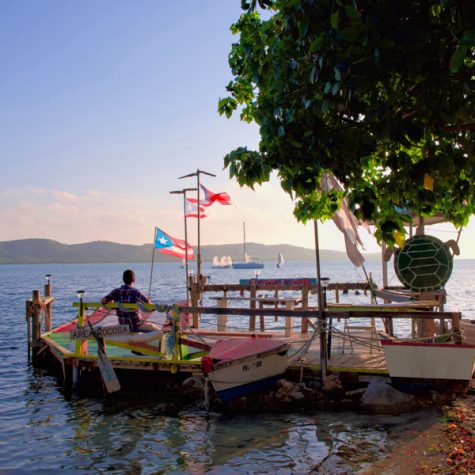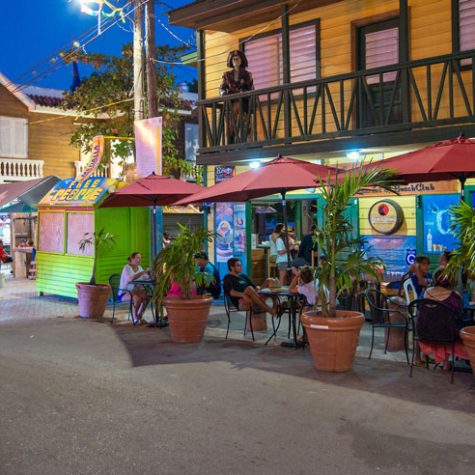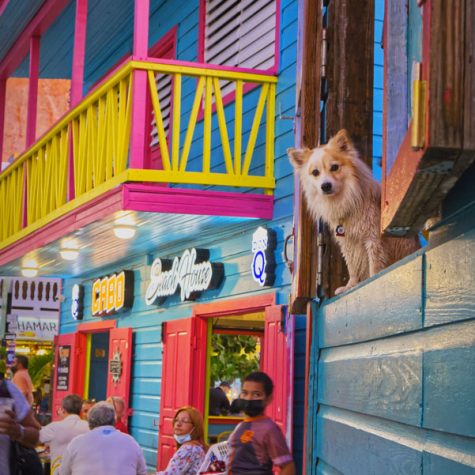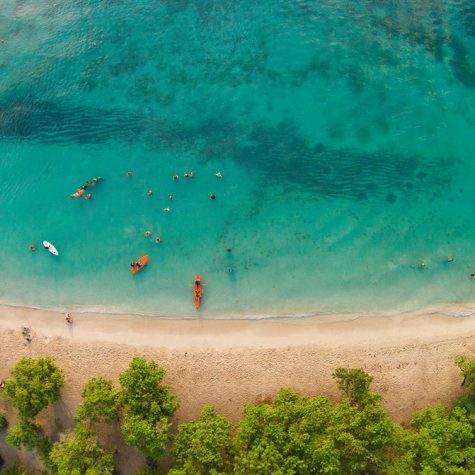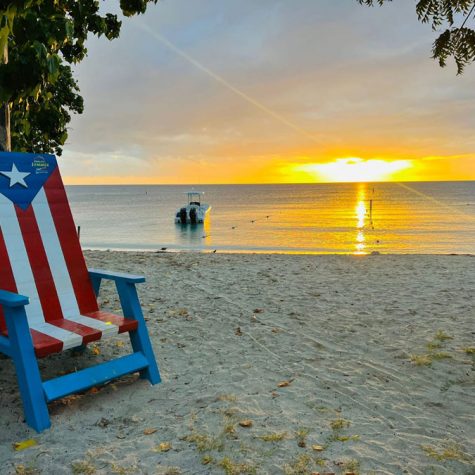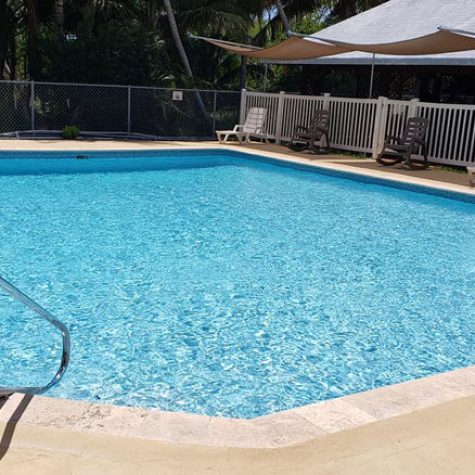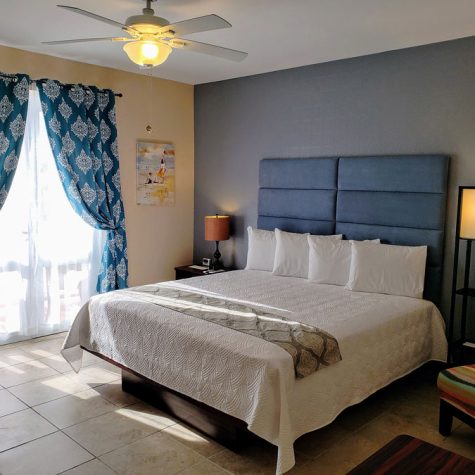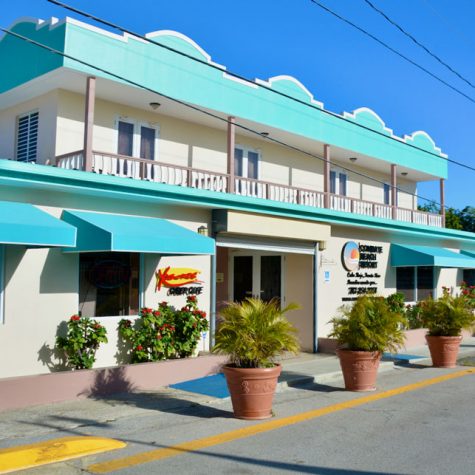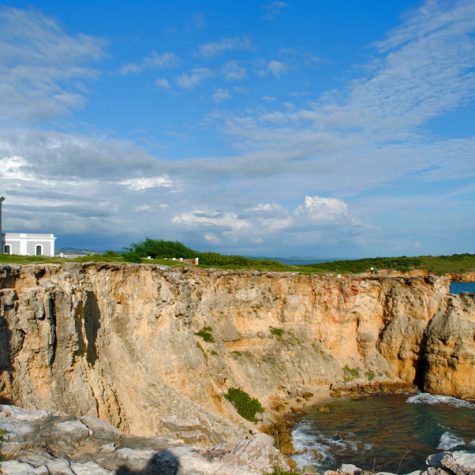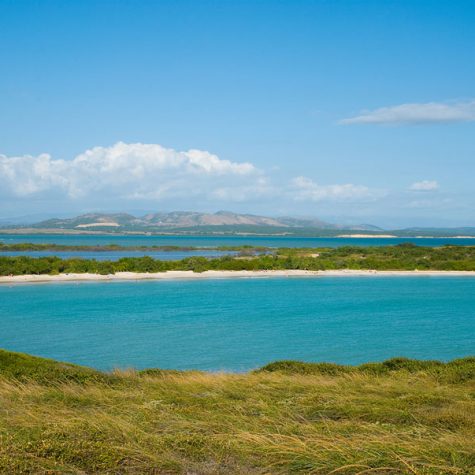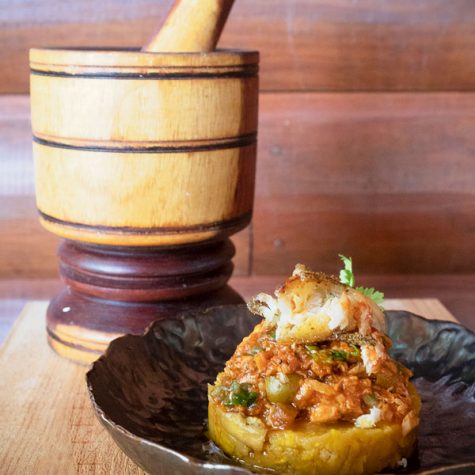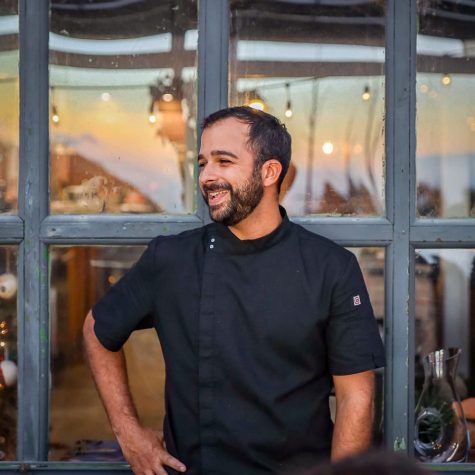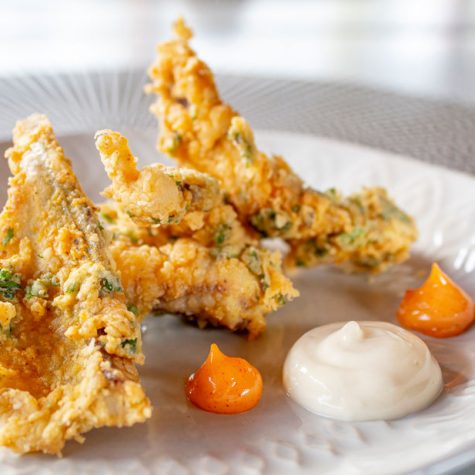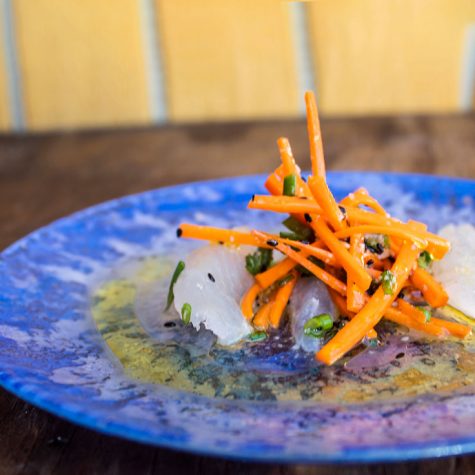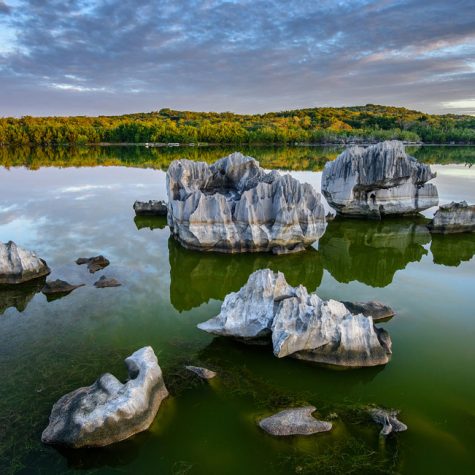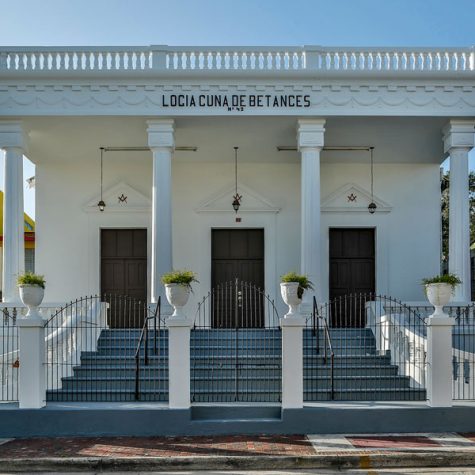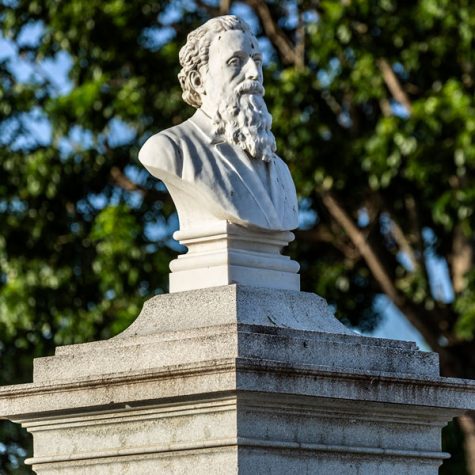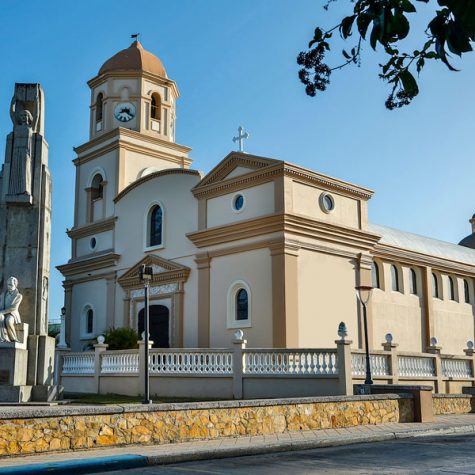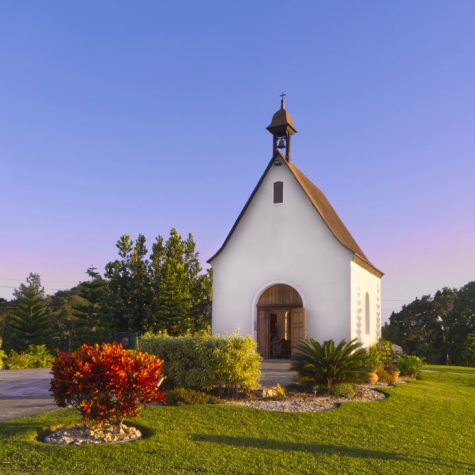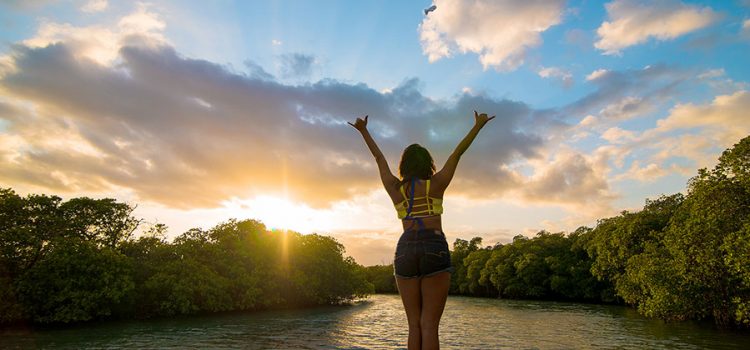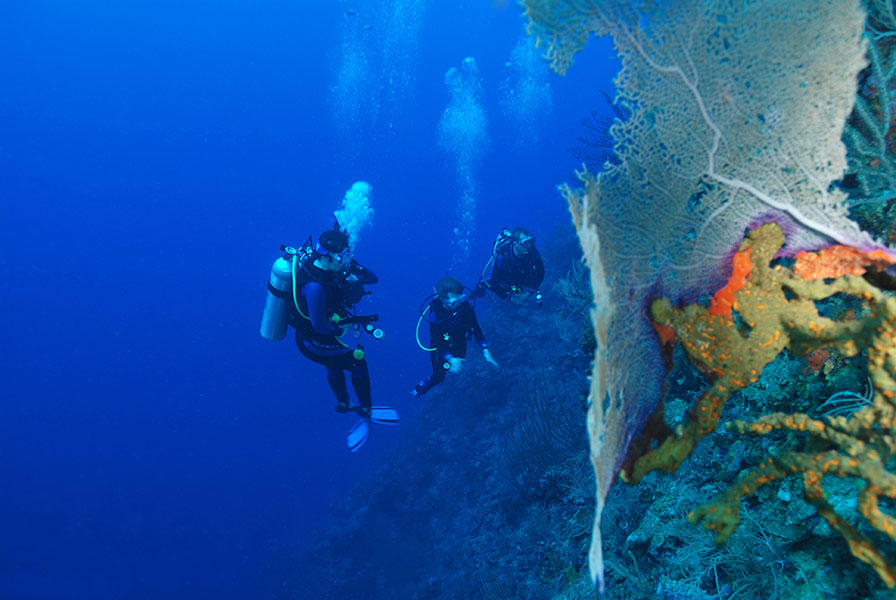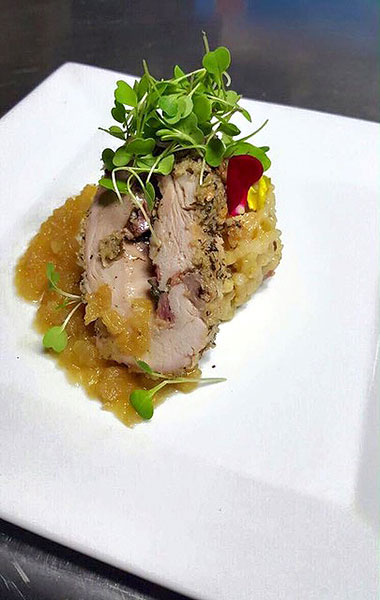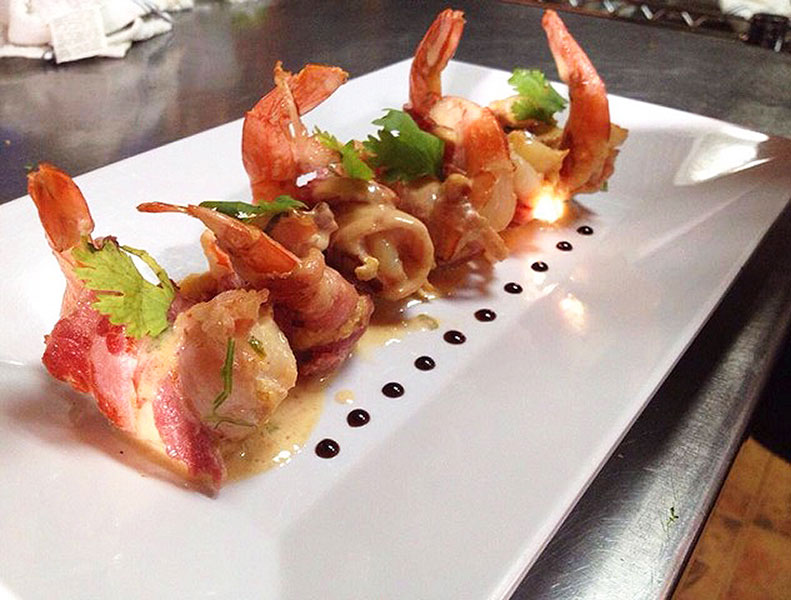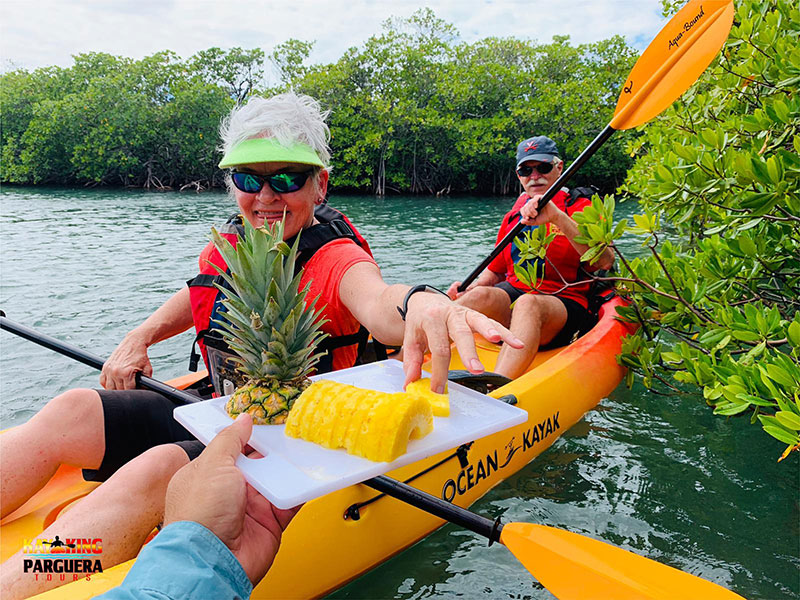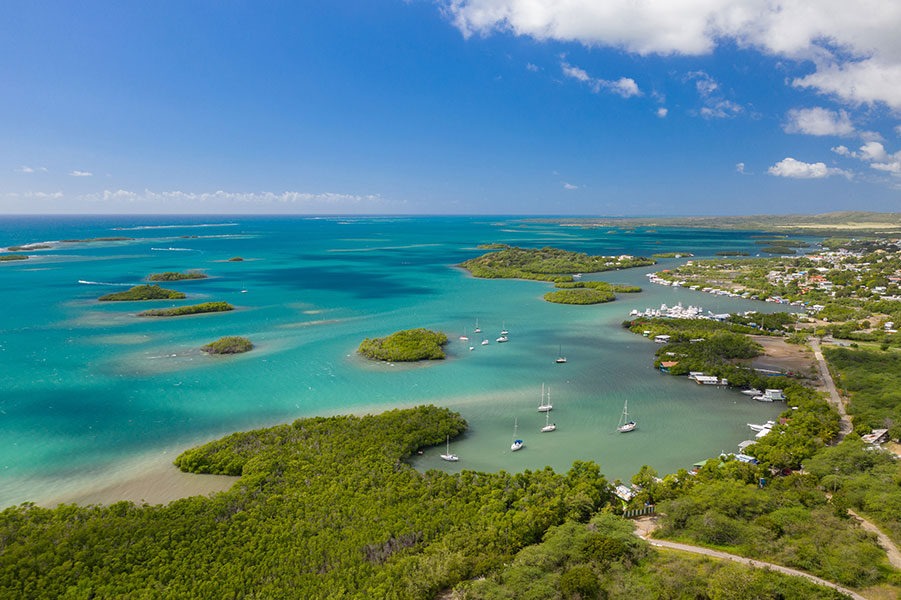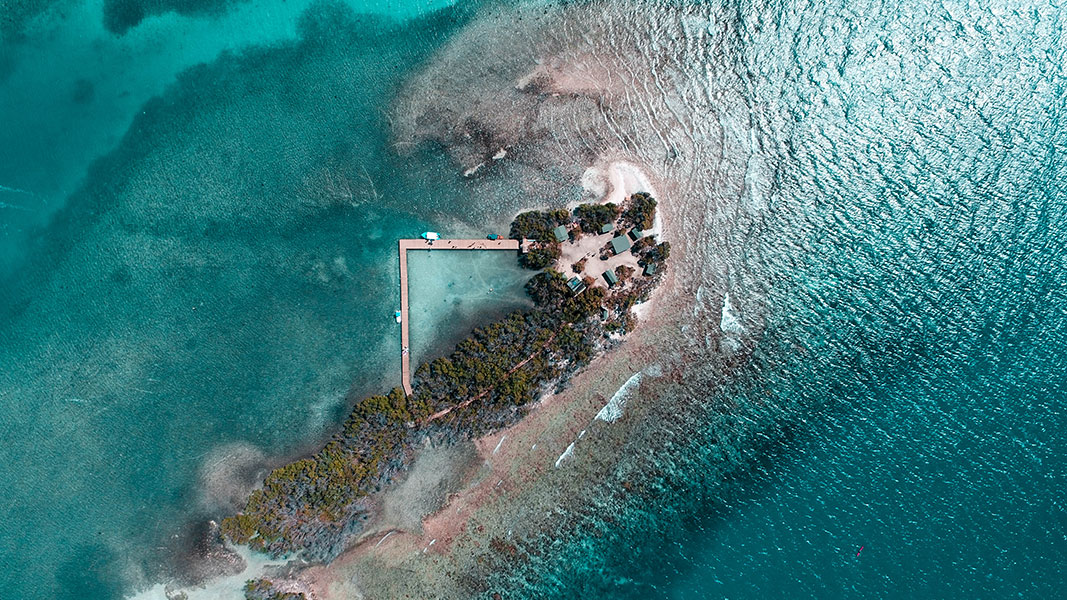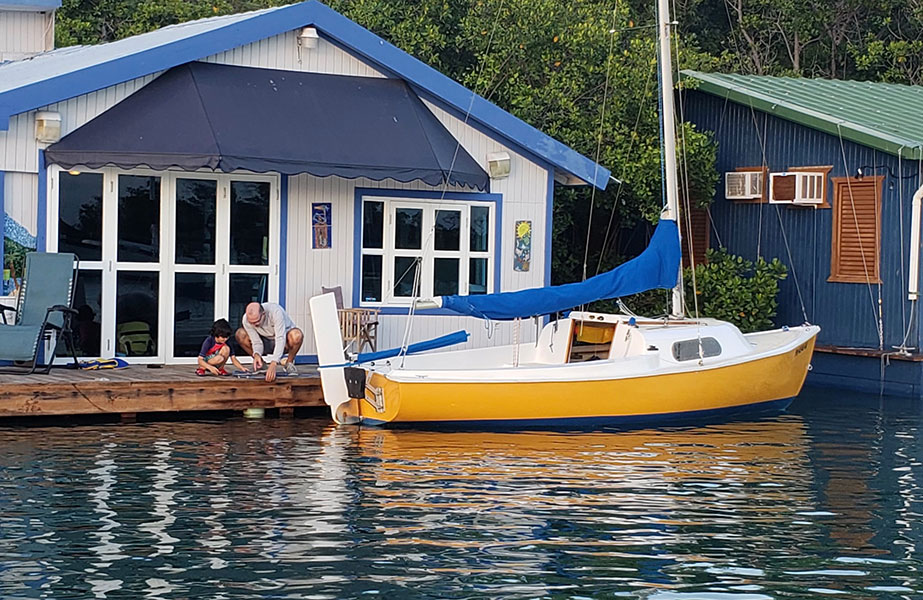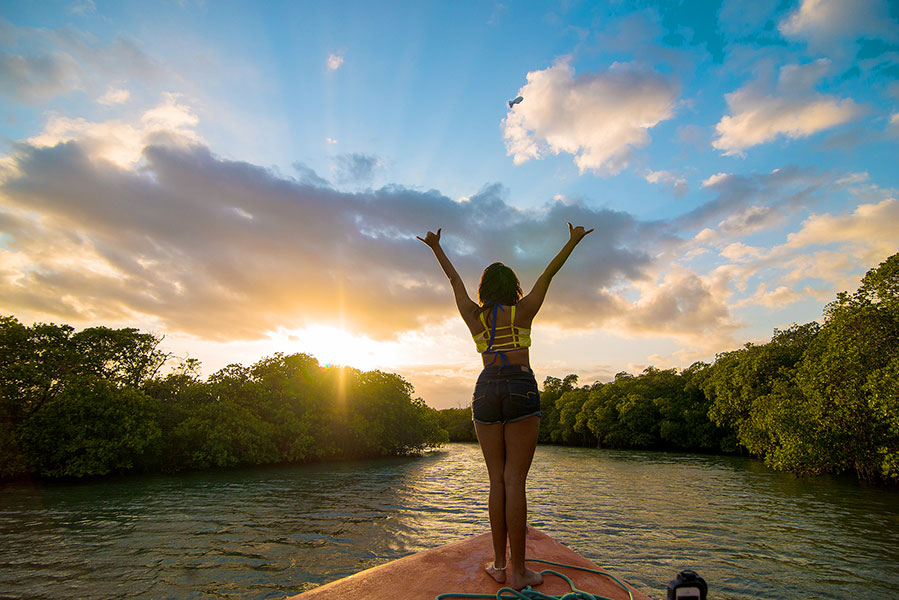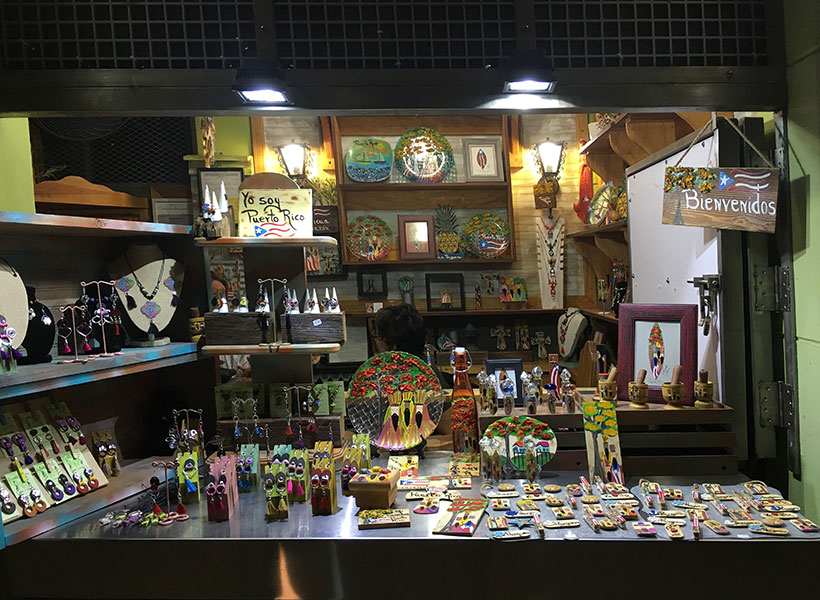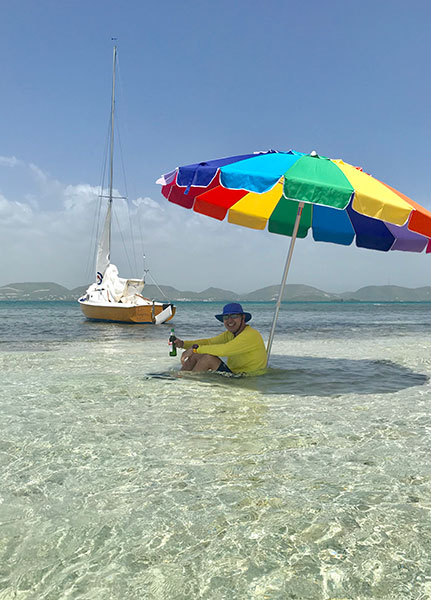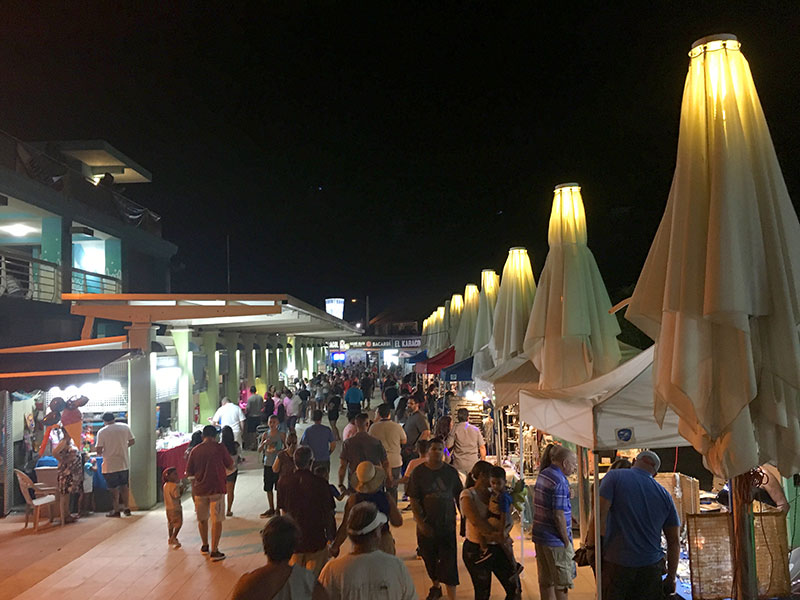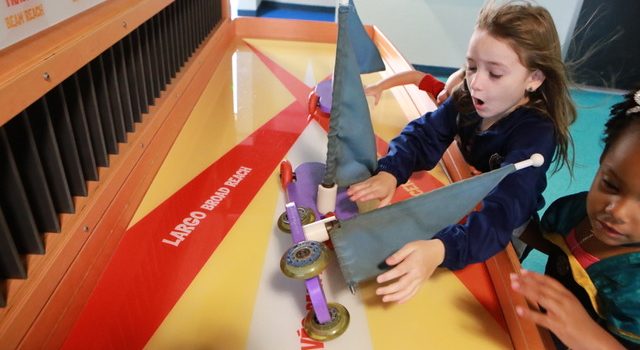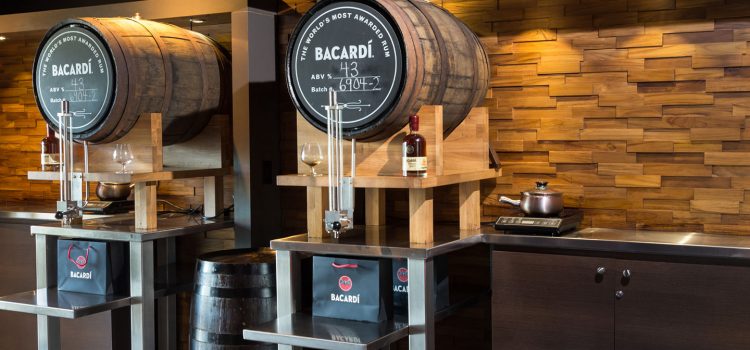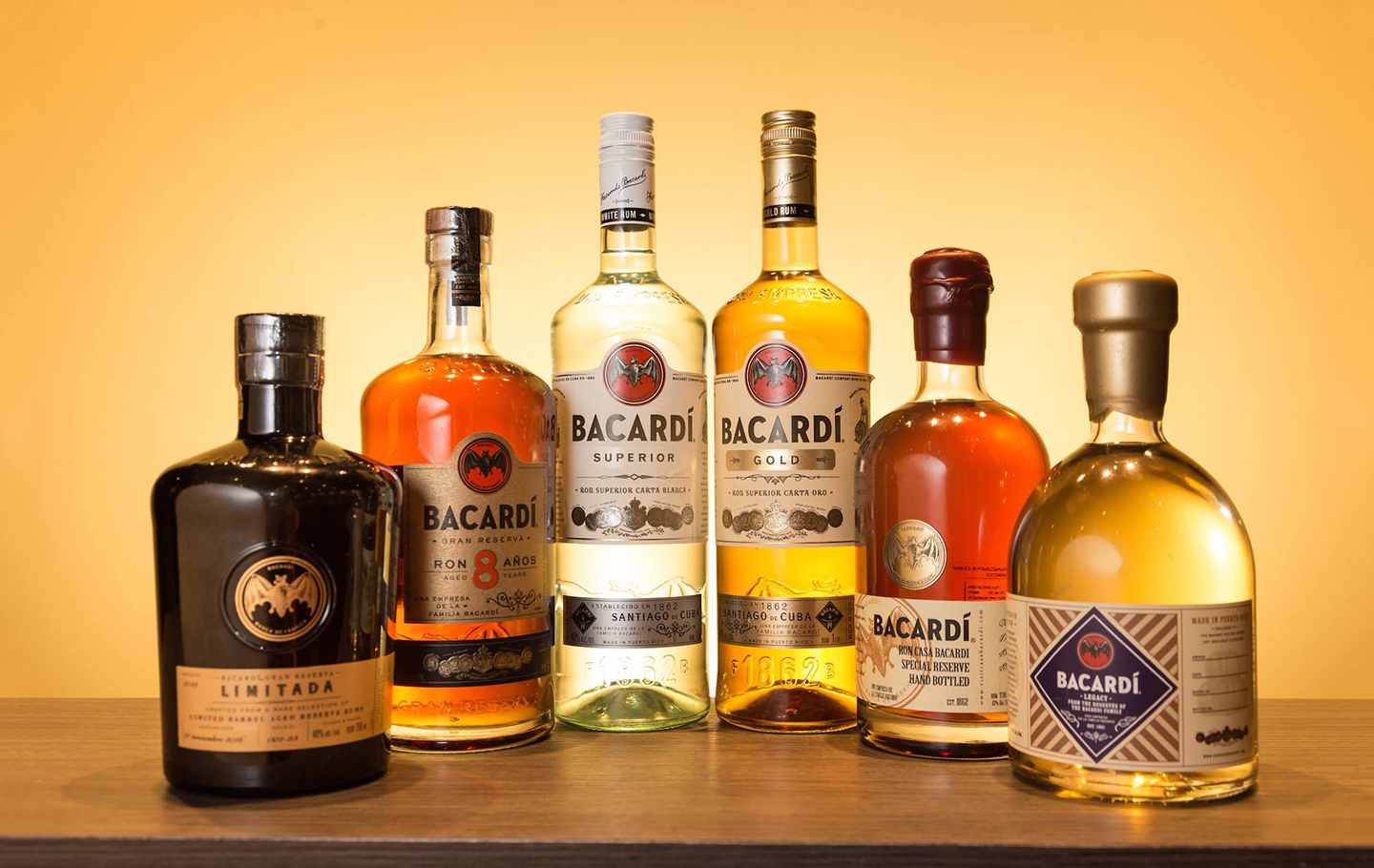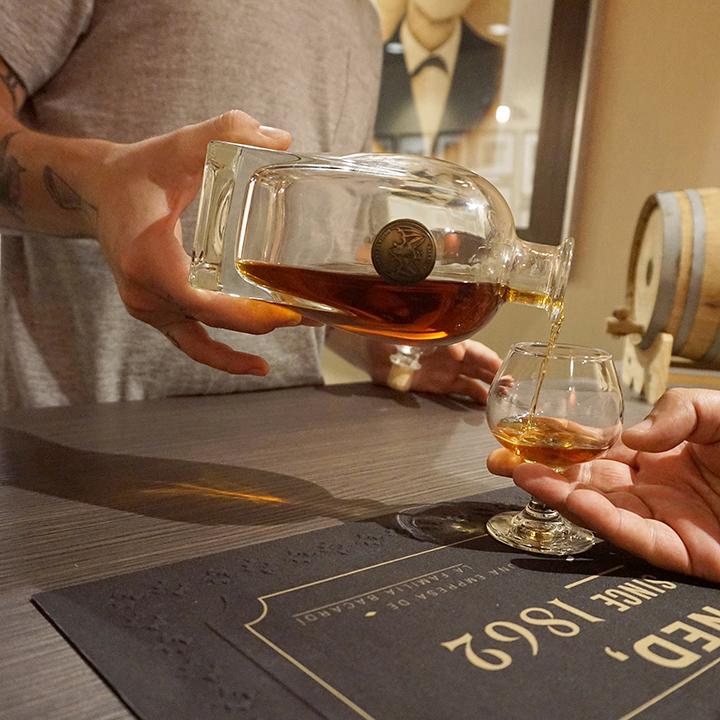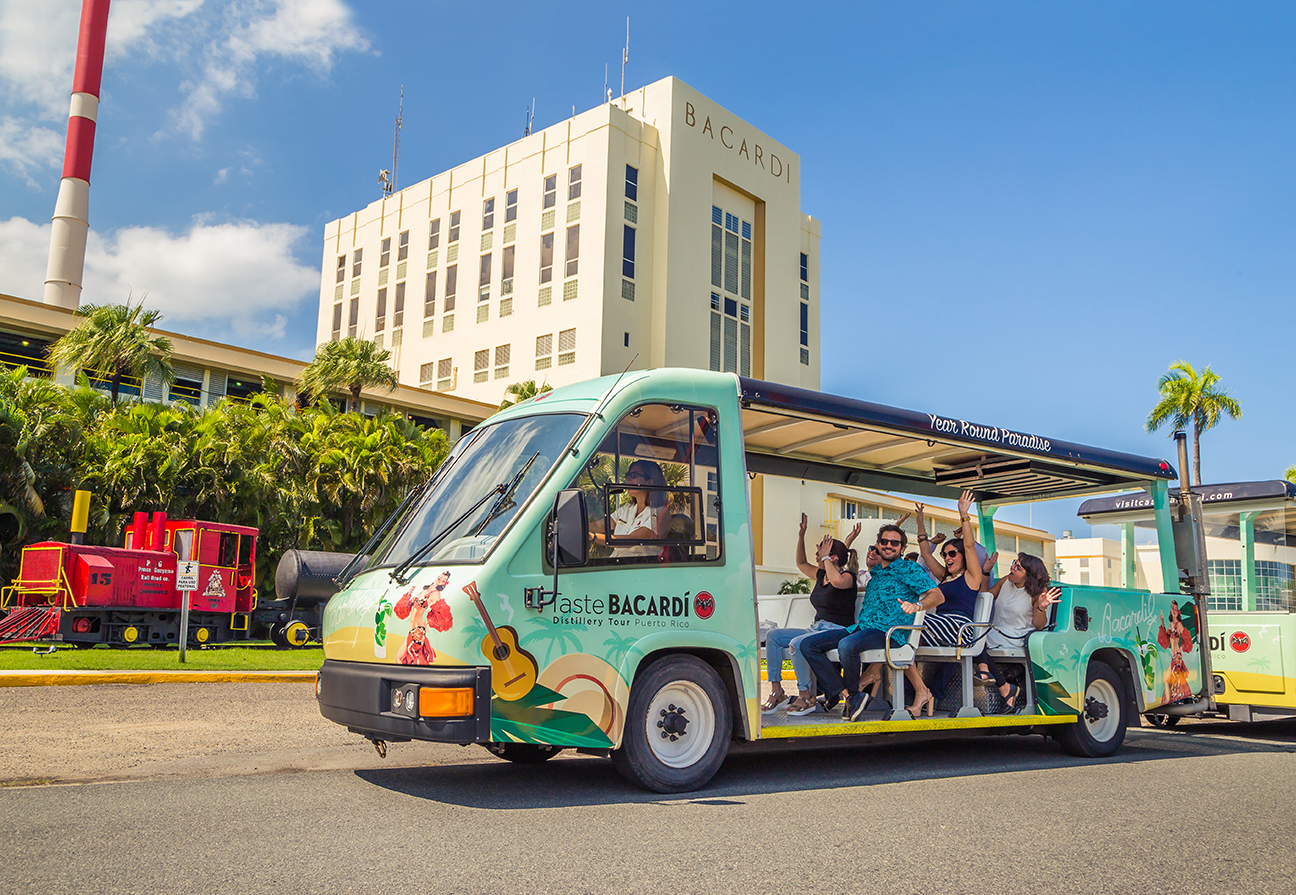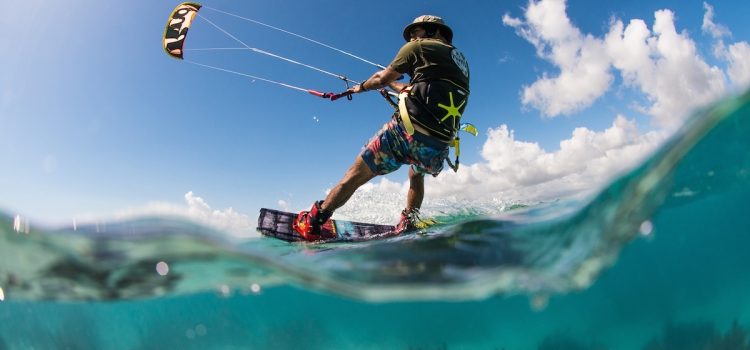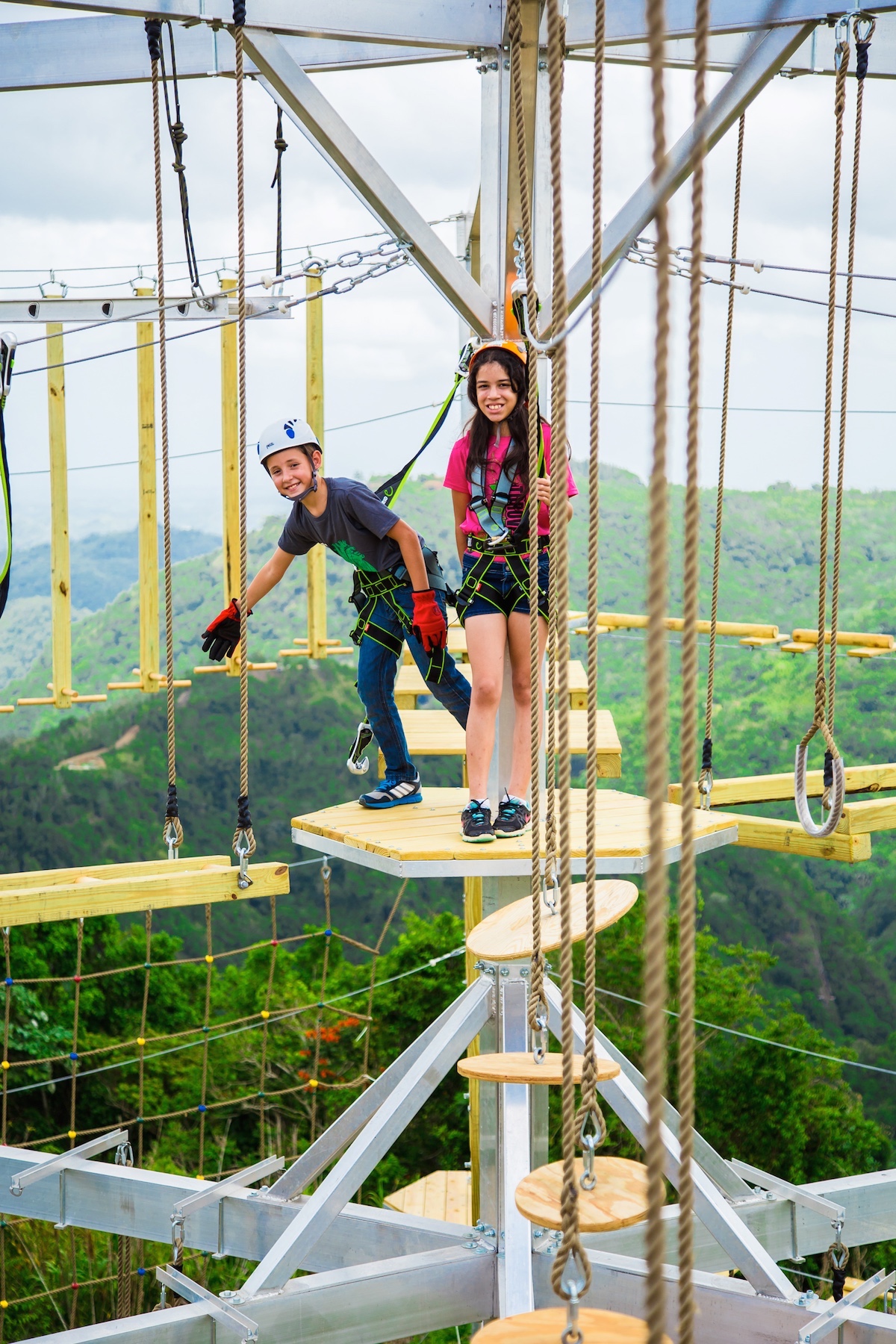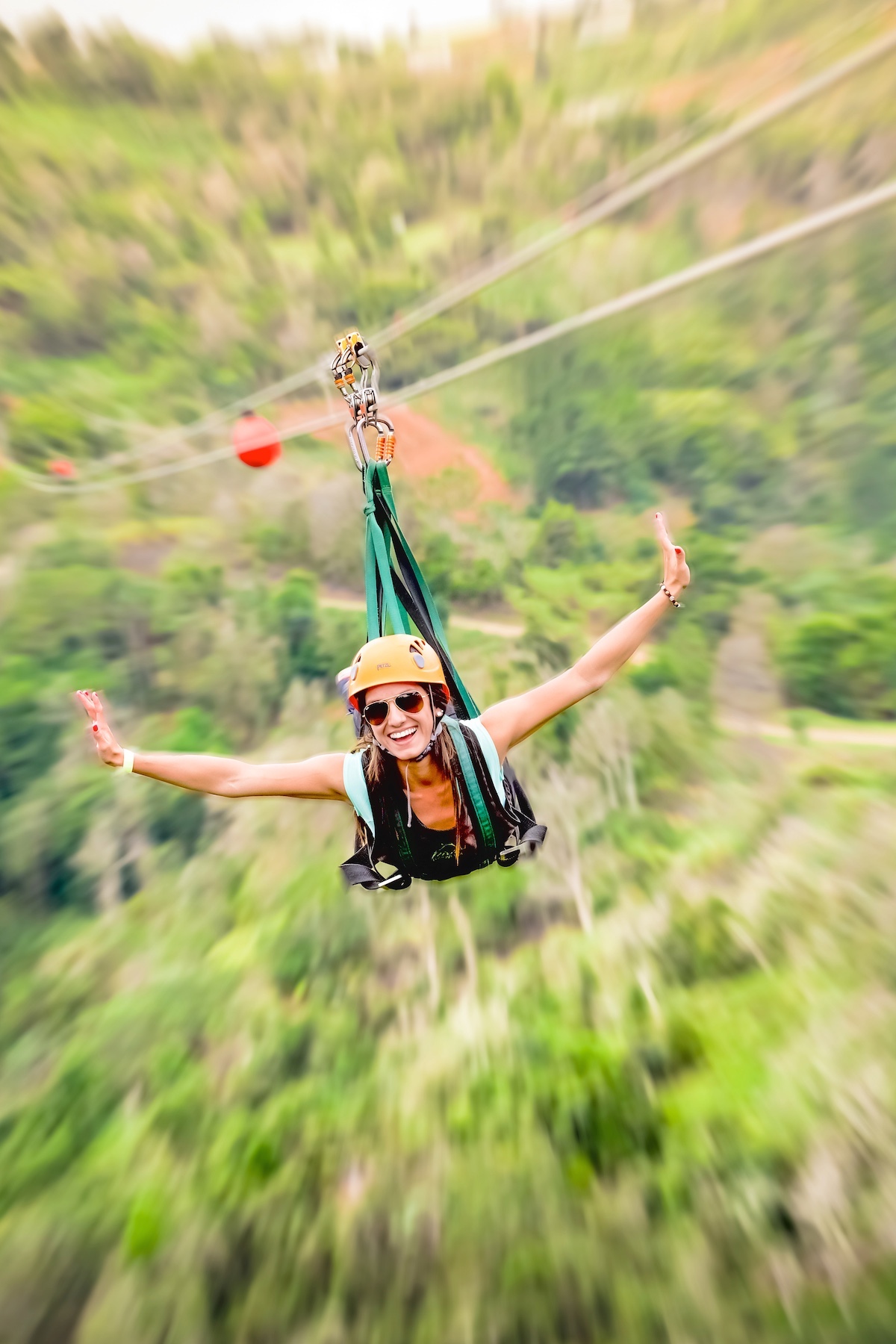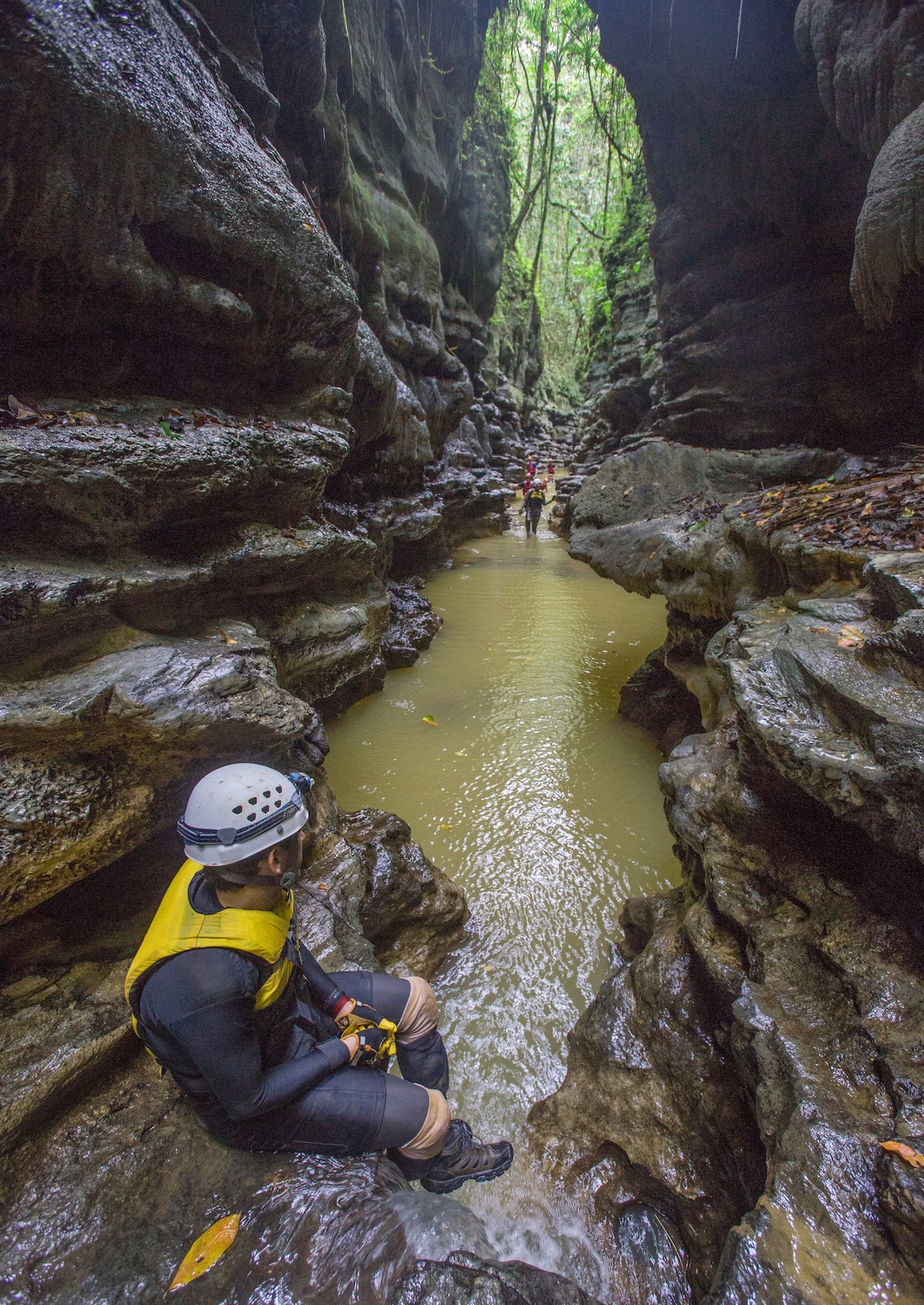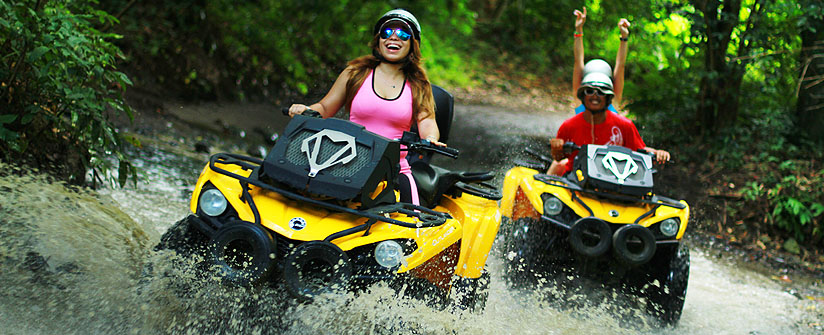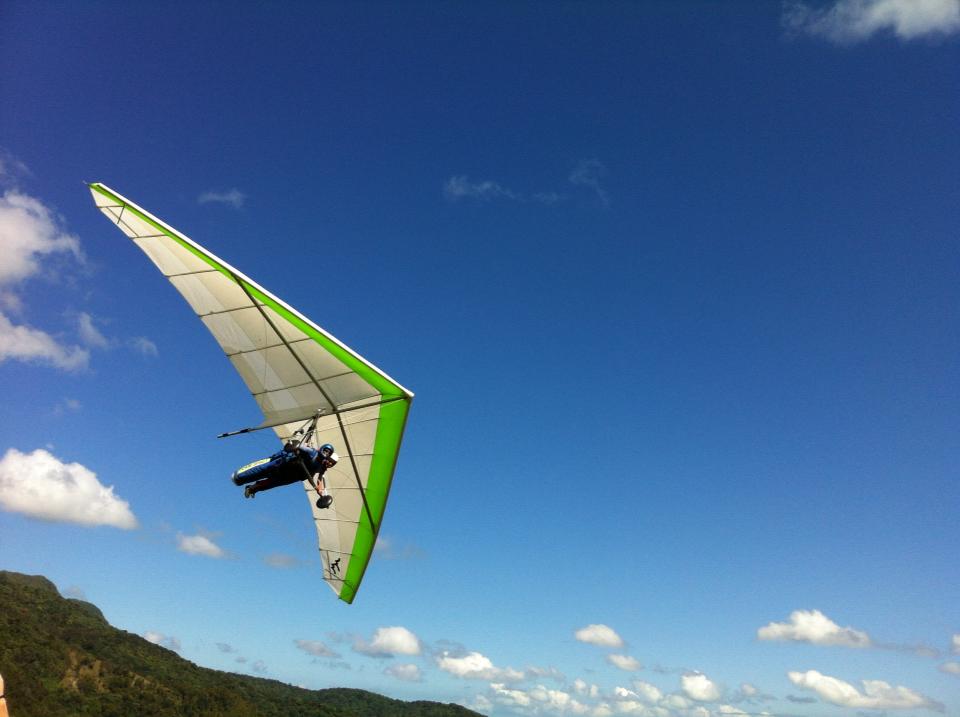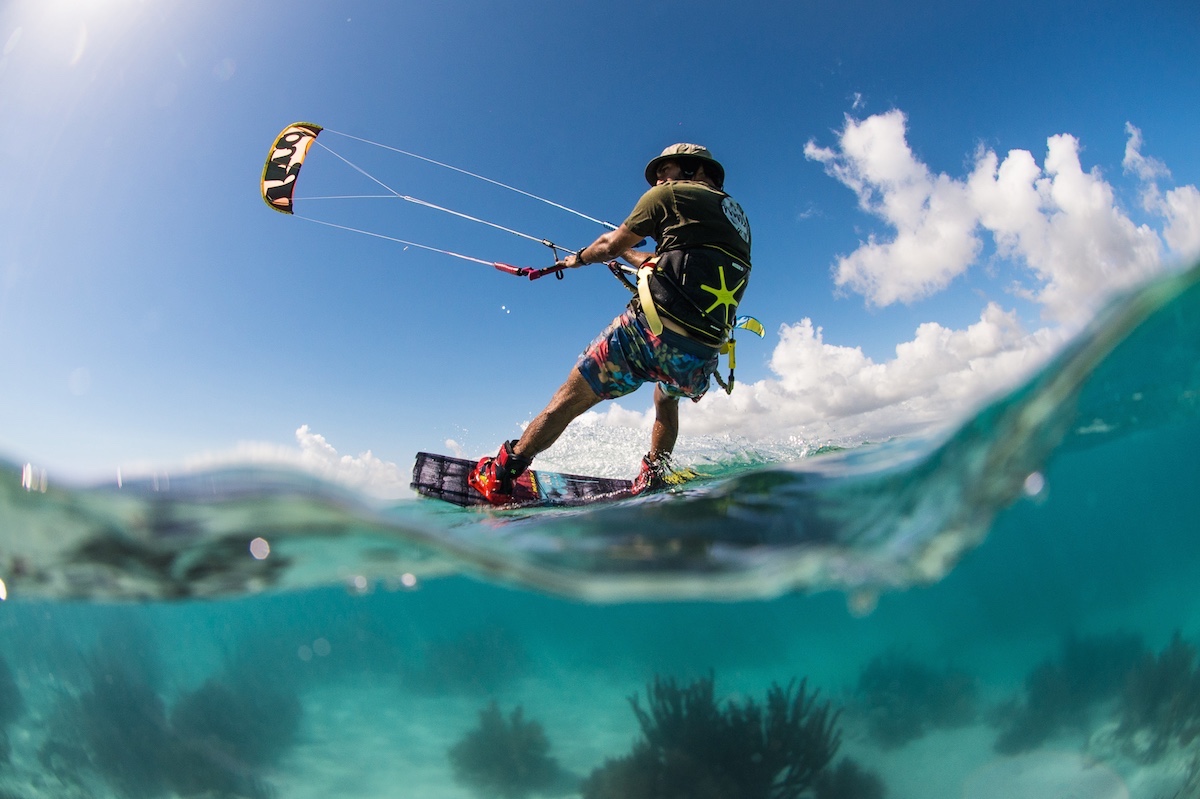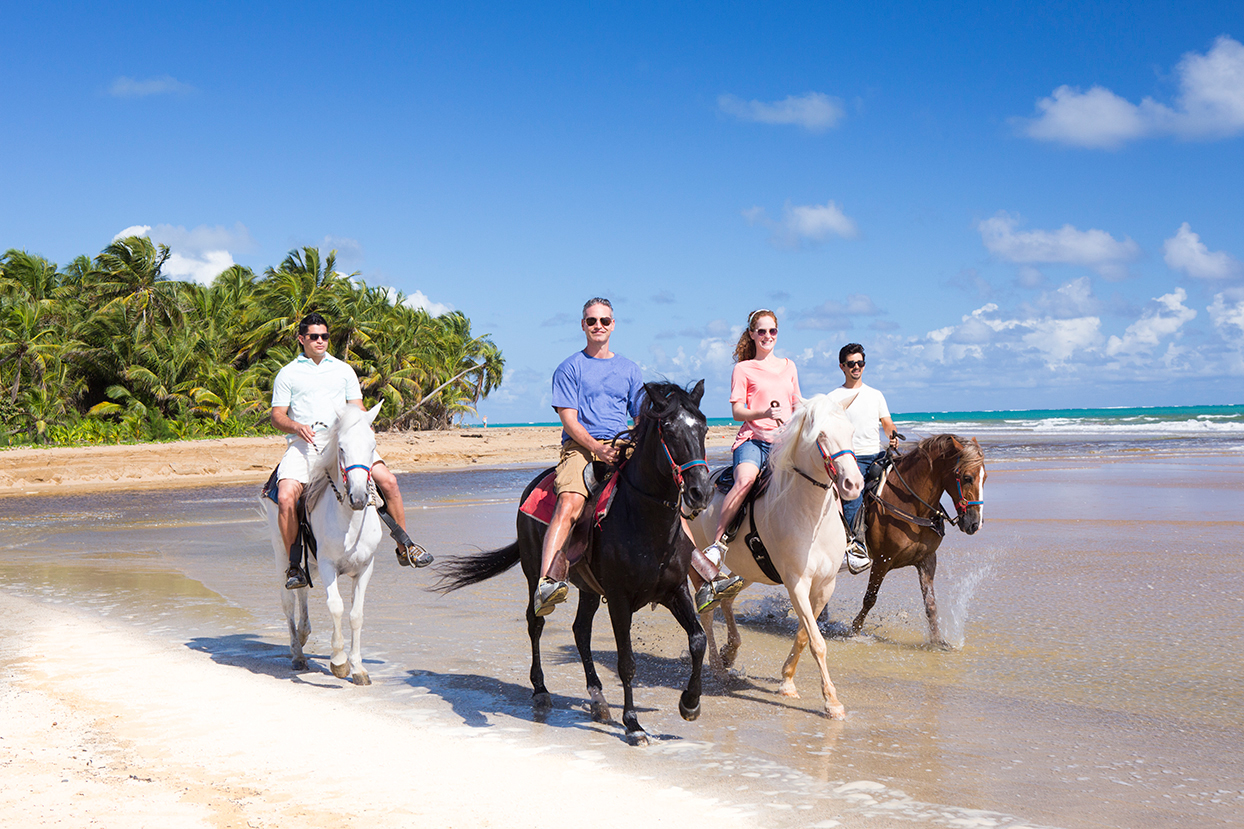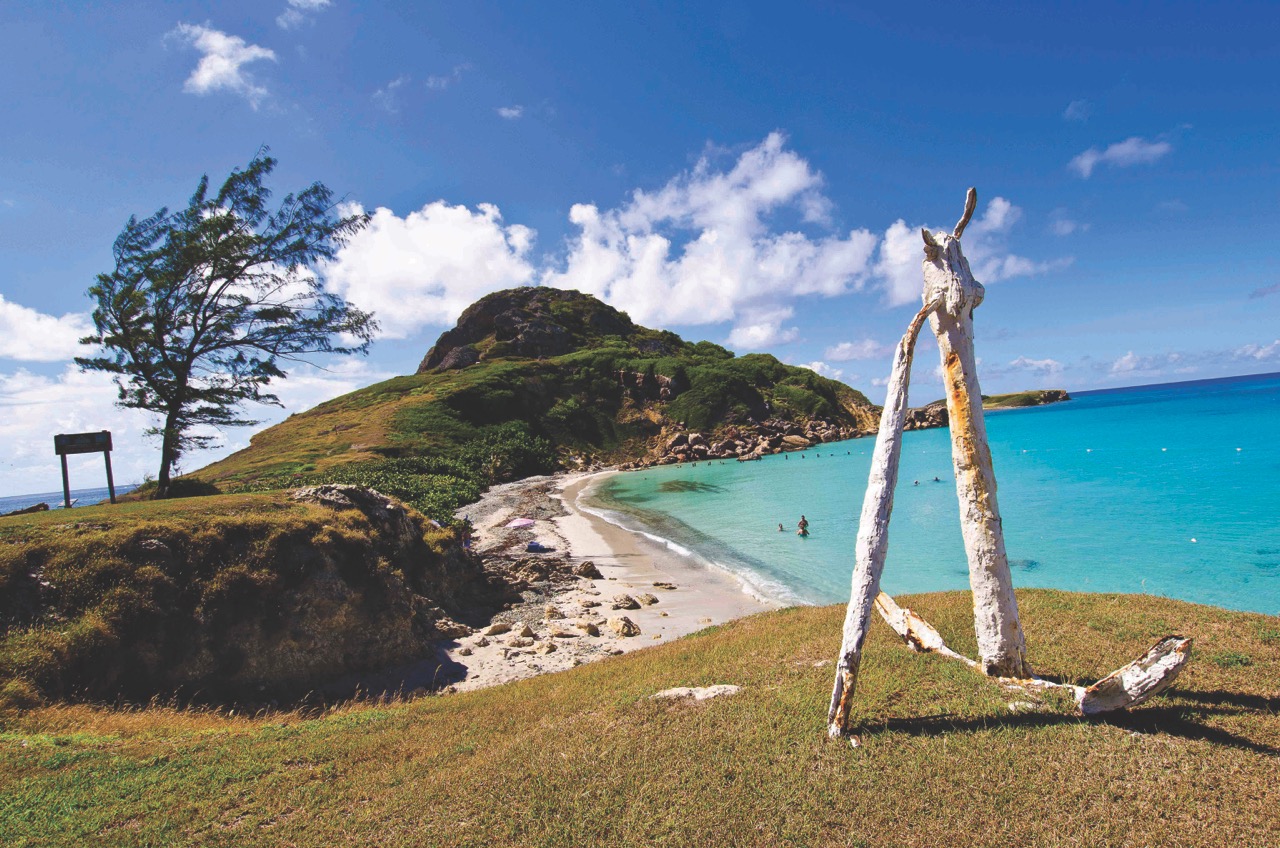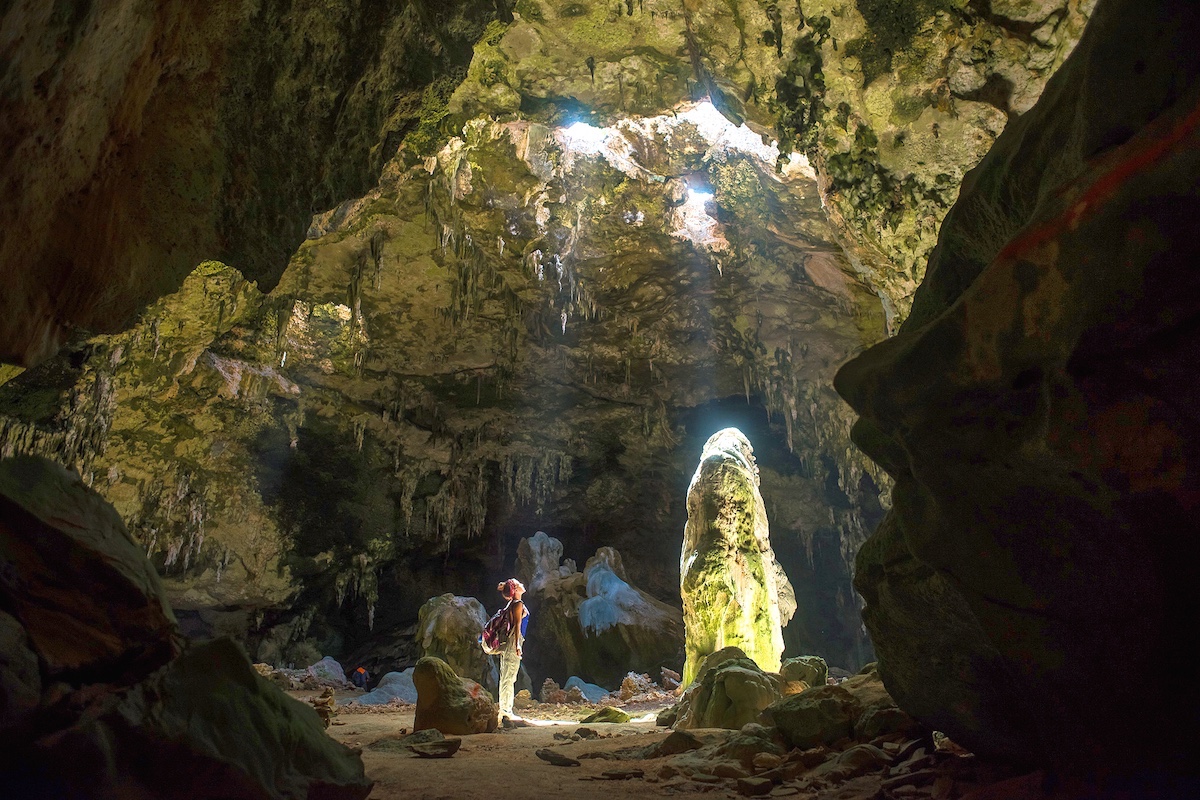Small hostelries make your vacation feel at home
Staying in a hotel and lounging on a beach was the typical vacation for visitors to Puerto Rico. Not anymore.
Staying in a hotel and lounging on a beach was the typical vacation for visitors to Puerto Rico. Not anymore.
More travelers nowadays seek a fuller experience of the island. The beach is still important but travelers also want to immerse in Puerto Rico’s local color, to learn about its vivid culture fusing Spanish, African and American influences, to get transported into that mellow tropical rhythm that is so much a part of being an island in the Caribbean. Staying in a guest house or a bed and breakfast (B&B), is part of the adventure, a way for an outsider to get closer to the destination and its people.
The allure of a small hostelry is easy to see: small is cozy, inviting, and personal. Guest houses and B&Bs, not to be confused with Airbnbs, are usually located in a residential neighborhood so staying in one spells a more intimate experience of a destination. Their owners, who are Puerto Ricans or locals with many years of residency, engage with visitors on a closer level, sharing their knowledge of the island and directing visitors to places of interest often overlooked by travel guides.
B&B facilities in Puerto Rico have no more than six rooms, include breakfast as part of the hotel rate, and operate out of the home of the owner, or a building within the owner’s property. There are currently 10 B&Bs on the island.
Sprinkled throughout the island, each B&B is a window onto a different corner of Puerto Rico, giving visitors an engaging portrait of a richly multifaceted island.Some are in the city, others in the country. Each enchants in its own special way.
Casa Sol and Casa Isabel are a fine introduction to San Juan, their locations bridge the metropolis’ colonial past with its cosmopolitan present.
Casa Sol, located on the eponymous street, is no different from the centuries-old colonial homes that grace the old city, San Juan’s mythical center. It is a two-story house painted a cheerful canary yellow with a large, imposing iron gate at its entrance. Its owners, Eddie Ramirez Castellano and wife Tisha Pastor have lovingly turned the ground floor of their home into a welcoming retreat for world travelers.
“The biggest difference between a commercial hotel and a B&B is the relation we have with guests; it’s very personal. We spend a lot of time with guests,” says Ramirez, a trim young man with the cool of a Zen master and the amiable charm of a host.
Casa Sol opened in December of 2013 and for the past five years it has been singled out for excellence by Trip Advisor. In 2019 it entered the travel website’s Hall of Fame. It is one of four B&Bs on the island that are green. It eschews plastic and gets its energy from solar panels on its roof. Guests are given small glass bottles to carry water around and are invited to take the 5-minute shower challenge. It turns out that staying within that limit gives you an extra hour and a half of free time per year not to mention that it saves more than 12,000 gallons of water yearly. Ramirez also buys in bulk to reduce waste. Casa Sol proudly displays its Green Key certification, which identifies it as a sustainable business.
Guests at Casa Sol are drawn from all over, including faraway places in French Polynesia, New Zealand, Japan and Russia. What they find is a home away from home. Its hub is the glorious, plant filled patio, typical of colonial homes, where morning breakfast is served and around which the five bedrooms are laid out. The ground floor also accommodates a comfortable kitchen and a small sitting area with rocking chairs and a writing desk, also for the use of guests. Ramirez and his family live upstairs.
Each of the guest rooms has its own name and is unlike the other. The rooms are comfortable and decorated with Puerto Rican artworks. On the beds, a doll created by crafter Gloribel Delgado waits to be tucked in at night. Little chocolate squares made with Puerto Rico-grown cacao are a welcome treat for guests. Another treat handed out on arrival: a delicious popsicle created by a local company named Señor Paleta.
The work of love that is Casa Sol is not only reflected in the beautiful way that Ramirez has decorated the place but in the fact that so much of what is in the building was salvaged from destruction or recycled. He purchased the building as a ruin. Over the course of two years, the building was restored using the bricks and ancient beams of the original structure. A tub in one of the rooms was rescued from a Bayamon home where it was found covered in earth, with a tree growing out of the drain. Other rescued items include the writing desk, a statue of St. Francis (now standing in the patio), and the banister spindles on the house stairs. The patio floor was made using smashed up damaged bricks.
If Casa Sol reflects Puerto Rico’s past, then Casa Isabel reflects its cosmopolitan present. This B&B is located in one of San Juan’s most colorful neighborhoods, the Loiza Street area that has become a veritable gastronomic epicenter in recent years. Casa Isabel is right in the heart of this sector, ready to give visitors a taste of a modern city’s culinary predilections. The area teems with regular bars and wine bars, eateries, and restaurants like Silk (oriental fusion), Bebo’s (Puerto Rican food), Fleria (Greek), Sabrina (international), Round Eye Ramen (Japanese), Pinky’s (the place for breakfast, or lunch). And there’s more.
In business since December 2014, Casa Isabel is based in a lovely 1930s Spanish colonial house with a pastel green exterior set off on one side by a rampant fuchsia bougainvillea. It has five rooms, each with a private bathroom and a small refrigerator, and several communal rooms, including a beautiful porch with an oblong sofa, the perfect place to enjoy a late afternoon drink. In front of the house, the small garden is shaded by trees and a couple of stone benches invite to a moment of quiet relaxation, or perhaps conversation with a fellow guest. The ocean is just down the street so you get the both of two worlds: city and beach.
Margarita Buenaga, its owner, said she inherited the house from her great aunt. At one point selling it seemed the best course but a nephew encouraged her to turn it into a B&B. Despite her lack of experience in tourism (she worked in the insurance industry), Buenaga is pleased with how things have worked out. She said she gets a lot of guests from Canada, Europe and the Orient. Many are people who come to the island on business trips. Guests are well looked after and she attends to all their requests, even handling their laundry if necessary. “This is their home,” she said.
Beyond San Juan is the beautiful, luscious Puerto Rican countryside. Casa Flamboyant in Naguabo and Dos Aguas B&B in Rio Grande immerse you in the island’s exuberant natural world. Both are magical and secluded.
A stay at Casa Flamboyant is “like stepping into a different world, one that is more tranquil, calm, and full of nature,” said Ricardo Miranda who runs the property with his partner Florin Lepadatu. They purchased the property five years ago from an American woman who ran it as a B&B. While ownership changed, the name of the B&B stayed the same.
This is a very intimate hostelry with only three beautifully appointed bedrooms for adults, as no children are allowed. Each is equipped with its private entrance, bathroom, and a fridge. Miranda said guests are served a two-course breakfast consisting of fresh fruit (from fruit trees in the property) and an entree that varies each day. Visitors can always drive to nearby Naguabo or Fajardo for lunch or dinner but many guests like to stay put and cook a meal using the grill or microwave available on the premises.
There is plenty to keep them occupied. On the spectacular rooftop there is an inviting pool filled with spring water and sweeping views of the ocean and the surrounding hills of El Yunque National Forest, the only tropical rain forest in the U.S. Everywhere the eye can see there is green foliage, a soothing sight that puts the soul at ease. Nature offers many diversions. Visitors in a hiking mood can walk two miles to the Naguabo-side entrance of El Yunque where trails beckon or they can have a fun time frolicking in two natural pools formed by falling water from two waterfalls in the property.
Says Miranda: “Our motto is disconnect so that you can re-connect with nature and with each other.”
Visitors to Dos Aguas are likewise seduced by its location. “From the moment the gate opens, you feel like you have stepped in a whole new world. You feel a sudden peace. You start connecting with nature in a completely different level,” wrote a visitor on the B&Bs Facebook page.
Located about 30 minutes away from San Juan, Dos Aguas occupies a large commodious house with lots of windows and shady open porches. All around is the exuberant, green vegetation, as if nature were wrapping its soothing arms around you.The house sits on a 3.8 acre property that takes its poetic name from two rivers, Rio Grande and Espiritu Santo. They meet in front of the house, hence Dos Aguas, which means two waters.
The hostelry’s four rooms are simple but with a luxurious feel: large, comfy mattresses, elegant accessories, earthy colors. It opened its doors in December 2016, closed briefly in late 2017, and was back in business by January 2018.
Carla Arraiza, who runs Dos Aguas with her mother Ivonne Gonzalez, said the property had been home to her grandparents and turning it into a hostelry was a way to preserve it. Her interest in travel and the tourism industry also factored in. She wants to show visitors that Puerto Rico can produce quality. “I love to give them personalized attention,” she said, referring to her guests who hail from Canada, the U.S., Mexico and Europe.
At Dos Aguas, they find an ideal place in which to luxuriate in the natural environment but with plenty of other alternatives for diversion like kayaking, paddle boarding or riding a boat down the river. El Yunque is a short distance away and night tours of the phosphorescent bay in Fajardo can be easily arranged. Or guests can visit the beaches in Luquillo and Fajardo, which are close by.
“It’s a space that is near everything but gives you the sensation of being far away,” said Arraiza.
Puerto Rico’s guesthouses share the same goal of B&Bs: to make visitors feel at home and give them a special experience of the island. There are about 29 of them and they are somewhat larger operations as they can have a maximum of 27 rooms. Most are located on the Puerto Rico mainland although a couple can be found in Culebra and Vieques. These two, idyllic little islands — a favorite week-end destination of many Puerto Ricans — are the perfect place to get away from it all and enjoy all the activities one associates with the surrounding sea like swimming, snorkeling, windsurfing, sailing, diving, kayaking, or just plain sunbathing on the sand.
Located some 17 miles east of the Puerto Rican mainland, Culebra is only 7 miles long by 5 miles wide and has a population of fewer than 1,400 people. Its beautiful beaches, some of which can only be accessed by car or boat, attract visitors from all over the world. The most famous by far is Flamenco, a wide expanse of white, coral sand stretching for about a mile around a sheltered, horse-shoe shaped bay with shallow, turquoise waters. It was voted the number one beach destination by The Travel Channel.
Club Seabourne is the only boutique hotel in Culebra. It is nestled within the hillsides with breathtaking coastal view of Fulladoza Bay. Each of its rooms and villas are exquisitely furnished and feature a bespoke interior and exterior design. Guests can opt to take at the Caribbean chic property a refreshing dip in its pool, pure relaxation in a hammock within its lush landscaped gardens or visit one of the region´s breathtaking beaches. Enjoy world-class amenities and services, casual dining, and a host of fun activities. At Club Seabourne get away from it all and immerse yourself in a unique experience that can only be described as Caribbean chic.
Mamacita’s Guest House is right in Culebra town, two colorful buildings painted in joyful pastel colors, standing right next to a canal. It has 16 rooms, including guest suites with balconies overlooking the nearby ocean. One room in particular, N. 301, gets a high rating for its “spectacular view.” Mamacita’s is more than a guest house as it also runs a popular bar and restaurant with a menu centered on seafood like lobster, fish and shellfish though it also caters to meat eaters with such selections as T-bone steaks and churrasco. The bar is well known for one drink in particular: the “legendary Bushwacker,” a synthesis of coconut cream, coffee liqueur, rum and cinnamon.
Vieques, 8 miles east of Puerto Rico, is 20 miles long and 4.5 miles wide, making it somewhat larger. It has one main town, Isabel Segunda on the northern coast, and Esperanza, a fishing village on the southern end. This mostly hilly island also is famous for its gorgeous, pristine beaches. Villa Coral Guesthouse, a 7-minute walk from Esperanza, is a Mediterranean-style house with beautifully manicured grounds and lovely views from its sun deck. It makes a convenient home base for daily excursions to surrounding beaches, some of which are completely deserted if you go early in the morning.
The guesthouse has seven rooms, all with their own private bathroom and mini fridge. They are comfortable, simple but nicely decorated with local artwork and flowers. Additional rooms can be found in a cottage, named Coralina that sleeps two people and is a two-minute walk from the guesthouse; a separate two-bedroom apartment with one bath is also available. Both are operated by the same owners.
You have to ‘Chinchorrear’ to taste the best of Puerto Rico
If there’s one thing that’s true beyond a shadow of a doubt about Puerto Ricans, is that we love to party and eat.
If there’s one thing that’s true beyond a shadow of a doubt about Puerto Ricans, is that we love to party and eat.
And not only do we love to eat, but we will trek across the island looking for restaurants, food trucks, or holes-in-the-wall to find the best dishes. On the weekends, that tradition is known as chinchorreo, when friends and family get together to hit laid-back or off the beaten path spots, usually outside the San Juan metropolitan area, for a cold beer, pool, dance with a jukebox or live music and savor some of our best typical cuisine.
There are countless chinchorros and many fabulous scenic routes –mountain and coastal alike – but Bienvenidos found some notable coastal places that are worth including in your road trip whether going on your own with a rental car or booking a private bus with driver to take you to a predefined route when you’re on the island.
Over on the eastern side of the island are the iconic Luquillo kiosks, a strip of about 60 restaurants featuring everything from Puerto Rico’s basic dishes to a variety of international options, creative cocktails and, of course, souvenirs.
The kiosks, located on Route 3, down the road from El Yunque Rainforest, are a magnet for locals and tourists on the weekends, when the crowd is a mix of bikers, families and vacationers. Some of the kiosks face the road, and others face the gorgeous Luquillo beach. Most feature a glass-encased display of traditional fritters, meat and seafood turnovers, stuffed potato balls and corn sticks, known as sorullitos de maiz.
While the list of possibilities is long, there are several restaurants there that are worth checking out. Prices depend on how fancy or laid back the menu is.
Kiosk 50, A Fuego Bar & Restaurant offers a unique fusion of savory Colombian and Puerto Rican fare. Its menu combines both Caribbean cuisines with an assortment of food like fruits, root vegetables, as well as fresh fish and seafood. This lively restaurant has a fire station theme, which originated in honor of 9/11. As its attraction, A Fuego has a fire cabin where guests can sit and take selfies, turn on lights, sound the siren and even take a virtual ride.
Kiosk 38, Ceviche Hut, offers Peruvian fare, including ceviche, seafood paella, and chaufa rice. You may want to wash everything down with a Pisco sour, Peru’s most famous cocktail.
One of the most popular sit-down restaurants on the row is El Brindis, Kiosk 43. The fish tacos and the variety of stuffed mofongo and seafood salad options are among the most-ordered dishes, while the cocktail menu is also appealing.
On the more typical Puerto Rican side of the list is La Parrilla, the tenant at Kiosk 2. Although on the pricier side of the scale, this self-proclaimed “king of lobsters” has them in all sizes and preparations. Whether thermidor, or stuffed with seafood, all are paired with a side of typical rice and beans, or other options such as the house specialty, rice with sweet plantains.
Tucked away in a stunning enclave where the Rio Grande de Manati river meets the Atlantic Ocean in the northern town of Barceloneta, is a sector known as “La Boca.” There, you will find a cluster of some of the most relaxed — and colorful — restaurants, each offering their own delicious specialty.
Getting there is easy, as it’s a virtual straight shot heading west on highway PR22, about 45 minutes from San Juan. The point of reference is the picturesque Puerto Rico Premium Outlets, where you will hang a left once you get off the exit, onto Route 684 and follow the signs that will take you through the Barceloneta town square and miles of lush green flatlands.
After crossing the bridge over the river, the first spot you’ll see to your left is El Bohio del Gran Pescador, whose menu features fresh-caught fish, pickled root vegetables, octopus salad and a Puerto Rican staple — the mofongo — a fried green plantain dish that can be paired as a side dish, or stuffed with just about any tasty protein.
Down the road is an oceanfront restaurant that’s truly hard to miss because of the yacht sitting on the roof emblazoned with its Pura Pesca name. The casual sit-down eatery is open air and faces the Atlantic, so the ocean breeze will cool you off on a hot tropical day.
Pura Pesca features a bilingual menu and is run by a trio of young guys who serve a full range of options — anchored by the “Constant,” an oversized serving of crab with rice, red beans, Mahi-Mahi filet with tostones, or twice-fried green plantains. Not to be missed is their hefty alcapurria, a fritter that combines a mixture of starchy vegetables such as green plantains and yautia, and is stuffed with ground beef or seafood.
As a final note, it’s always a good idea to check the operating hours for each of these locations on their social media pages, as some open differently depending on the time of the year.
Let’s get this chinchorreo roadtrip started!
Get Calma in Cabo Rojo, Puerto Rico’s tropical southwest coast
Singer Pedro Capo must have had Cabo Rojo in mind when he penned the 2019 Latin Grammy Song of the Year, “Calma,” an infectious ode to the unique joys of Puerto Rico’s laid back coastal life.
“Let’s go to the beach to cure the soul
Close the screen, open the Medalla
Slow and happy, facing the wind
Take advantage the sun is hot
And let’s enjoy the scene
Let’s jump in the water to feel how good it is
And let’s get tropical
Chinchorreando across the coast….
So you can let loose, little by little
Because to have fun, you don’t need to leave Puerto Rico.”
– Lyrics of “Calma” by Puerto Rican singer Pedro Capo
Singer Pedro Capo must have had Cabo Rojo in mind when he penned the 2019 Latin Grammy Song of the Year, “Calma,” an infectious ode to the unique joys of Puerto Rico’s laid back coastal life.
Cabo Rojo unfolds across the island’s sun and sea splashed southwest corner, an area of beautiful secluded beaches, majestic limestone cliffs and pristine nature reserves. It’s among the island’s sweetest, most Caribbean seaside stretches, and is home to both Boqueron and Combate, two of Puerto Rico’s most quintessential beach towns, where the art of just hanging out hits new heights.
So when you are in Puerto Rico, take a break from the ritz and the glitz of the Condado and Isla Verde tourism bastions and make sure you take a dive down here and enjoy the simple splendors of Cabo Rojo. The sea is as clear as it is calm, and invitingly warm, and the joys of island life are in reach from a hammock swinging in the tropical breeze, whether it’s a fried fish fritter or an icy cold piña colada you’re after. The town has been attracting visitors since the days when the pirates ruled the Caribbean and is a favorite vacation spot for island residents. The dress code du jour is never much more than sandals, shades and swimsuit, but you won’t’ be giving up much in leaving the city.
Cabo Rojo’s coastal communities teem with activity at night that lends them an air of a tropical carnival throughout the year. Singers perform in open air bars and seafood restaurants line the narrow streets of the town’s seaside havens, while artisans and food vendors sell their delights outside, with a flavorable breeze mixing with the music and laughter. On weekends and during holidays, you’re likely to encounter dancing in the streets, possibly to the exuberant drum and brass beat of a live salsa band, an amazingly talented local busting out a Spanish ballad at akaroke event or some 80s dance music spilling out from a bar.
But of course, this is the far west, so before heading out for some apre sol fun, make sure you are ready to celebrate a glorious sunset from a coastal perch with your refreshing libation of choice in hand. This is one of the best spots in the Caribbean to watch the sun set.
The town’s culinary specialty is fresh seafood, with dozens of waterfront restaurants across Cabo Rojo. The charming fishing villages of Joyuda and Puerto Real are legendary for the quality and quantity of family seafood restaurants, which also excel at the local comida criolla, and a perfect stop for a leisurely lunch or early dinner to watch the sensational west coast sunset. Digging into a delicious fried red snapper or grilled Caribbean lobster, set off by some expertly prepared tostones or rice and beans, while looking out from the restaurant deck to the calm sea is an amazing experience you won’t want to miss. However, Cabo Rojo cuisine is much more varied than its iconoclastic seafood tradition, with a new generation of young chefs offering new renditions of this winning formula and other cutting edge culinary explorations that has enhanced the dining scene along with a greater diversity of international restaurants. Likewise, you can still get the coldest beer in the world and a piña colada in a coconut, but town bars have also upped their offerings to include craft beer and cocktails and other more sophisticated offerings. Meanwhile, community galleries and boutiques sell local art and fashion for the most discriminating of tastes.
With 18 beaches along 28 miles of coastline (the largest of any Puerto Rico town), and some of the island’s clearest calmest waters, Cabo Rojo is probably the best place on the island to take a swim. It’s heaven for water sports lovers, with dream snorkeling and diving sites, sailing opportunities and deep sea fishing excursions from the marinas scattered throughout town, with the Puerto Real and Boqueron marinas two of the most popular.
But Cabo Rojo is much more than its coast. State and federal nature reserves in town are idyllic areas for biking, hiking and bird-watching. Cabo Rojo’s cultural charms include a century-old lighthouse with an astounding panoramic view of Puerto Rico’s southwest coast, and a historic downtown area. Driving along Cabo Rojo country roads is also charming experience in itself. You’ll roll through highlands with grazing cattle, farmland and patches of tropical forest as the Caribbean coast glistens in the background. Cabo Rojo is an important player in Puerto Rico’s back to el campo revolution, in which a new generation is rediscovering farming, producing everything from gourmet coffee to organic goat’s milk to grass-fed organic beef. The town is also home to Puerto Rico’s oldest continuously operating business, a sea salt producer, and driving along the town’s picturesque coastal salt flats is another unexpected pleasure. Their pink sheen is what gave Cabo Rojo, or red cape, its name.
The gorgeous Combate and Boqueron beaches are the town’s most popular, and there are beach and water sports rentals, from beach chairs to jet ski tours, available at both. Buyé is another gorgeous narrow white beach that threads between a blue gentle sea and a green craggy fence of tropical shade trees that keeps a portion of the beach deliciously shady throughout the day. There are rest room facilities and food and refreshments and beach chair available on site, among other amenities, and makes for a great day at the beach.
Combate, however, is our vote for most in the spirit of smash hit “Calma,” which prescribes kicking back on the beach with some cold drinks and your lover as a cure for the soul. From nearly every point you stand on it, the virgin beach at Combate stretches out endlessly before you, its sands the whitest and the sea fronting it the bluest you are likely to see. There’s not a palm tree in sight, but instead a line of native Portia and mesquite trees, towering sea grapes and flowering mangroves that provide a fat line of protective shade on the narrow beach that unfolds for over three miles.
Combate Beach Resort accesses this gorgeous beach at its sultriest spot and is surrounded by the U.S. Fish and Wildlife Cabo Rojo National Wildlife Refuge, making it an idyllic retreat to get away from it all, as well as a preferred location to explore both Combate and the greater Cabo Rojo area. It’s just a short walk over a wooden bridge and sand path cutting though the gorgeous tropical brush between the hotel’s back patio and the fine white sand fronting azure sea. There’s plenty of room for everyone to stake out their own piece of shade on the beach, and corresponding stretch of sea and sand over here, and it’s just a short walk to the string of beachfront bar-restaurants that constitutes Combate’s “downtown.”
This boutique hotel, which is the most awarded small hotel in Puerto Rico, brings the best of the Puerto Rican parador experience to a new high, with quality and comfortable rooms, friendly and efficient service and gorgeous grounds and first class amenities. The shady pool area and surrounding deck is the perfect area to chill out, with a backdrop of tropical forest and surrounded by the sliver of tropical forest separating the property from the beach. It also offers extras like a 24-hour wine cellar and bodega with a broad selection of fine wines and tapas, and homemade award-winning tropical sangria you have to try.
The hotel lobby is a great spot to hang out and get information from staff on the area’s attractions.
The breakfast served here from an inventive and flavorful menu will power you through your big day exploring Cabo Rojo’s wonders. The property, which offers bike and kayak rentals, provides direct access to some of the best biking and hiking trails through the 1,836 acre National Forest, an area of coastal salt flats and sub-tropical dry forest that offers sweeping vistas and is the most important stop in the Eastern Caribbean for migratory birds, making it a perfect spot to bird watch, with 145 bird species having been identified. The hotel also has other sports facilities including basketball and volleyball courts.
Annie’s Place has an envious location overlooking the sea beside the beach and Combate village, and delivers on the tried and true formula of fresh seafood and Puerto Rican classics expertly done. Santos Seafood Bar and Restaurant, a block off the beach, has a fanatical local following for its service, flavor and prices, a family establishment that has become a permanent feature of the village scene. Our favorite place to eat was the straight-forward El Carey Bar and RestauranteOUT at the center of town. The unassuming chef, Eric Baez, is a disciple late-great chef Alfredo Ayala, the godfather of the the nueva criolla cuisine, and offers up expertly prepared Cabo Rojo classics, working from a palette defined by the freshest seafood he scours for daily across the southwest, and traditional Puerto Rican cuisine t hat would make abuela proud. Whether its serenata de carrucho, grilled Caribbean lobster or an inventive mahi mahi filet, El Carey delivers; you leave here satisfied, not only for the fulsome flavor, but also the price of your bill.
If you are here Friday night or Sunday afternoon, don’t miss the karoke fiesta going on at Santos – for a let-your-hair down good time. Enjoy the ice-cold beer or our favorite rum drink as locals with some serious crooning chops deliver it passionate versions of Spanish love songs, classic ballads and pop hits. On the night we were there, one woman launched into a dramatic version of La Lupe’s “La Tirana,” while what looked like a local fisherman delivered a stunning rendition of Luis Miguel’s “Si Nos Dejan” that hit all the high notes. Both numbers brought down the house as did the performance of a Julietta Venegas pop tune by two giddy and sunburned young women.
Combate is in close proximity to the must see attraction of the century-old Cabo Rojo (Los Morrillos) Lighthouse lies along a spit of land between two bays, a windswept spot, set off by dramatic limestone seaside cliffs, and surrounded by salt flats and a coastal forest reserve. Famous pirate Roberto Cofresi hid in the caves that dot the coast here and attacked trading ships during the 19th century. The lighthouse, which dates from 1881, stands above 200-foot limestone cliffs, which offer dramatic panoramic views of the coast. Make sure you save time to visit and hang out at La Playuela beach, a spectacular pristine horse-shoe with views of the lighthouse and the stunning vistas of Puerto Rico’s southwest corner. Take some time to walk through the reserve surrounding the lighthouse, with rare coastal vegetation and the birds of every color, and the surrounding salt flats which spread out along the sun-splashed, blue coastline. An observation tower at the salt flats offers exceptional views, while the interpretive center is informative.
Combate is just a short drive along Route 100 from the more centrally located Boqueron, but visitors from points east, including San Juan, are just as likely to get here along Route 303 from Lajas which ribbons through rolling farmland and gorgeous coastal views that bears the nickname of the “Extraterrestrial Route” because of alleged sightings across the years. The country road cuts through one of Cabo Rojo’s most remote and beautiful areas, Pitahaya, a place where your cell phone signal will likely drop and which is the lowest nighttime illumination in all of Puerto Rico. That’s partially responsible for the road’s ET fame, and the Puerto Rico Astronomical Society maintains a campground in the area because it is the best place on the entire island to observe heavenly formations at night, and the public is invited to attend the periodic gatherings, which coincide with specific celestial events.
Puerto Rico’s fledging “glamping” industry is also getting underway here via the Pitahaya Glamping Retreat, the perfect spot to get away from it all while not losing the creature comforts of civilization.The compound as a central house that serves as an office and communal pool and fire pit area. There are a ring of campsites with canvas tents and wooden platforms, each outfitted with comfortable mattresses and furniture, a kitchen and barbecue facilities and private restroom and showers. You can spend the days exploring the campground and surrounding countryside, a paradise for butterflies and tropical birds, or explore the mangrove chocked coastline on foot or kayak.
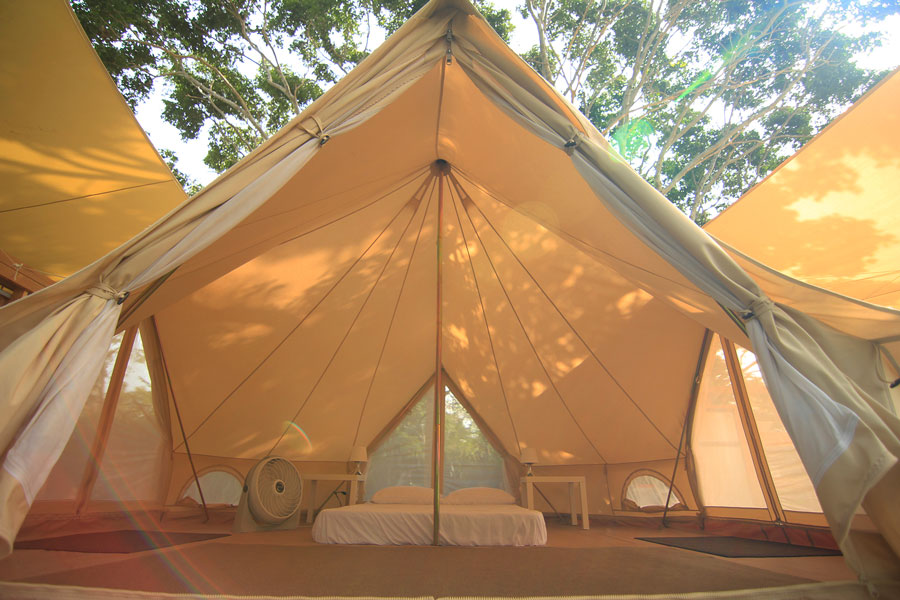
At Pitahaya Glamping Retreat you can spend the days exploring the campground and surrounding countryside.
Boqueron Beach curves in a graceful white arc lined by towering palms and sea graphs and thegentlest sea you can imagine, the water warm and salty to touch and gin-clear to the bottom. This is an official balneario, or public beach, so there is ample parking, dressing, shower and restroom facilities as well picnic areas and a cafeteria. This makes it an excellent stop for families.
The beach is just adjacent to the village of Boquerón, with a great after-beach scene because of its bevy of waterfront restaurants and bars. Have a cold drink and conch or Caribbean lobster fritter at the iconic El Schamar bar an drink in the scene. You can watch the sunset over the wooden dock behind the restaurant, one of the prettiest views in all of Puerto Rico, or continue shooting pool inside as the illuminating orange disk descends outside the wide open windows.
On weekends and holidays, there’s often live music performed at two different squares here, so it’s possible that you may find at some point on a Saturday line dancing in a crowd to bomba and plena music; nothing to worry about, just go with the flow.
When it’s time to eat, however, head direct to Downtown by Chef Jose Carles, just off the beaten path of the downtown area near the yacht club and marina. Carles ran the kitchen for years at the glamorous Royal Isabela resort on the northwest coast as well on South Carolina’s Kiawah Island before deciding on returning home to do his own thing at downtown. You’ll be glad he did. A fisherman himself, Carles’ constantly evolving menu plays off the freshest fish brought to the table that day, as well as the locally-sources herbs and produce gathered from the surrounding Cabo Rojo countryside.
Carles is a master of converting Puerto Rico’s traditional dining experiences into high art, and he can bring the simplest of delicacies to new heights. Fried fish and cheese fritters are served with tomato jelly and fragrant avocado dip, while the traditional black morcilla sausage is paired with steamed Chinese bao buns.
The chef also draws inspiration from creating gourmet delights from food most people would never consider eating, such as the invasive lionfish and the tiny ceti fish, which is more often used for bait than dinner. Try such an adventure while here; you won’t be disappointed. The red snapper and mofongo is among the best in town, but there are nightly surprises on offer here, like sautéed prawns over saffron risotto, a paella that changes with the seasons, succulent Cuban style beef canoe and sautéed octopus in black bean puree. It’s no wonder Downtown has a growing number of steady customers, and you’ll be thinking about your return even before you finish the meal. You can dine outside beneath leafy branches of enormous shade tree while watching the crowd strolling along the bayside promenade or chill out in the inside dining room.
Don’t leave Boqueron without checking in to World Cup Kitchen Bar, a sports bar that serves up gourmet cuisine and 80s hits and has the friendliest staff on the west coast. There’s a lot going on here, and the unique experience won’t disappoint. World Cup specialties include baked eggplant or sweet plantain piñon stuffed with either mahi mahi, salmon, steak, chicken or vegetables and topped with a creamy velouté, garlic or lemon sauce. There are also fine risotto, succulent grilled steaks and fresh seafood specials.
This is a sports bar, however, and the pub fare here is also a few steps above what you expect. The house burger literally towers from your plate, and the homemade cheese make the nachos something special. Everyone is friendly here, and you are likely to meet the husband and wife owners, who place a premium on welcoming service, and the young chef, who shows up every night to dazzle the clientele. The crowd is just as friendly, and this a favorite spot to stop for boaters and cyclists.
Boqueron has a number of fine traditional seafood restaurants, and the waterfront Galloways has among the choicest locations, with its back deck literally on the water looking west, the perfect spot to spy schools of fish on the dazzling sunset. They specialize is seafood and Puerto Rican cuisine but have ample U.S. style offerings. Try Pika Pika if you feel like some tasty authentic Mexican food at reasonable prices, and 101 West, on the drive out of town towards Lajas, is another fine option with fresh fish, smoked ribs and California cuisine offerings and craft cocktails. There is an attractive indoor dining room and bar, and back terrace that provides a taste of the Puerto Rican countryside.
Boqueron is another appealing spot to base yourself while exploring the southwest, and the Boho Beach Club, which was reborn in the aftermath of Hurricane Maria, is among the best bets in town, with a stylish lobby, restaurant and guestrooms, and an enthusiastic and knowledgeable young staff, who treat guests like friends and family. The pool and lounge area is among the best in Cabo Rojo, and the lobby restaurant is always busy, serving cutting edge cuisine from brunch through dinner and offering an impressive wine display and bar pumping out craft cocktails and tall tropical drinks. It’s a few blocks from the downtown area, which guarantees you some quiet on holiday weekends, and close to the entrance of the public beach. Another favorite spot to stay in town is Parador Boquemar, down by the village waterfront, offering guests a full-service restaurant and pool area.
Golfing enthusiasts can check out the Club Deportivo Del Oeste country club and marina, which features an 18-hole, Jack Bender designed championship golf course that has hilly terrain with spectacular views. Open to the public, the club also offers tennis, gym and other activities for the family with on site and nearby restaurants.
When you are ready to take a break from the sun, consider a stop at the Schoenstatt Sanctuary, a tiny beautiful Catholic church located between Combate and Boqueron on gorgeous, tranquil grounds that feel like a piece of Europe in Puerto Rico. The small church, which features a carved wood altar and stained glass windows, is located on a hilltop and offers views to the ocean and a sea breeze. The ground have a fountain, meditative gardens and a mosaic stations of the cross. Visitors are welcome daily.
Another option is the charming public plaza at the historic center of Cabo Rojo, a charming spot where men play dominos in the shade and laughing children dart around the colorful Puerto Rican candy stand. There are a number of historic buildings here, including the neoclassic San Miguel Arcangel Cathedral that was built in 1783, and a monument to Ramon Emeterio Betances, a medical student and beloved patriot who led the fight to abolish slavery in Puerto Rico. The plaza also features one of the first obelisks to be constructed in the Caribbean, with the monument dedicated to the founders of Cabo Rojo, with an adjacent Museum of the Patriots. Another attraction is a monument to hometown son Salvador Brau Monument, a poet, historian, sociologist and journalist who published the groundbreaking book “The History of Puerto Rico” in 1904.
Cabo Rojo’s tourism office runs a monthly guided tour of the historic sites called Cabo Rojo Nocturno, which culminates with a performance by the official municipal band playing Puerto Rican classics.
La Parguera A Caribbean dream
La Parguera is a dreamily beautiful coastal town that is the perfect place to explore Puerto Rico’s southwest region and the wonders to be found in the surrounding jeweled Caribbean waters. You’ll want to dive right in!
La Parguera is a dreamily beautiful coastal town that is the perfect place to explore Puerto Rico’s southwest region and the wonders to be found in the surrounding jeweled Caribbean waters. You’ll want to dive right in!
This gorgeous coastal town has its own phosphorescent bay, with waters that glow at night, and a famed coastline ringed by small islets with gorgeous beaches surrounded by clear, tranquil waters. La Parguera is among the best spots in the Caribbean for swimming, fishing, snorkeling, diving and kite boarding. La Parguera’s central seaside plaza is packed with charming restaurants, bars, guesthouses and boutique hotels. The establishments offer surprisingly sophisticated fare, from cutting edge seafood and fusion cuisine to artisan cocktails and craft beers. The seaside village also has a number of attractive boutiques selling beachwear and beautiful crafts and artwork, which also adds La Parguera’s considerable charm. It’s a wonderful break from the sun during the day and is one of the main dinner and nightlife destinations in the southwest.
The place is also the take-off point for voyages into the pristine Caribbean by boat and water sports operators. And if for some reason you don’t want to get on a boat, be sure to visit La Parguera’s Playita Rosada beach, a stretch of sand within its mangrove-chocked coastline, with fabulous saltwater swimming pool created from a square wooden dock.
To get to La Parguera, you take a two-lane highway along the emerald Lajas Valley in southern Puerto Rico, the majestic Cordillera Central mountain chain looming in the distance and cutting across the horizon. The drive then winds down a country road, which swoops through tropical forest and darts across hillsides cutting between views of the sparkling Caribbean Sea and lush landscape. It is among Puerto Rico’s loveliest areas, but despite the beauty of the approach to La Parguera by land, the charms of this seaside village are truly appreciated from the sea. Several small cays and islets, bobbing in the sparkling sea like floating tropical gardens, front the pretty village, which is marked by the colorful facades of its iconic boathouses breaking through its green shoreline, and beautiful guesthouses and vacation residences scattered across the sun kissed hillsides surrounding town that overlook the coast.
The town boasts some of the best hotels, restaurants and bars in the region, which is another reason La Parguera is the one of the most popular vacation spots in this picturesque area.
It’s the epicenter for water sports, boating and fishing, and is near several natural wonders in the areas, like the Guancia Dry forest and the Cabo Rojo lighthouse and adjacent coastal nature reserve, as well as the bounty of historic and cultural attractions in Ponce and San German. The town is also likely to be your best choice for a meal, gourmet beer or craft cocktail in the region, and it’s one of the best parties in the southwest, with live music in several establishments on many nights, especially weekends.
The Parguera Plaza Hotel is one of La Parguera’s best lodging options, overlooking the village’s main plaza, where something always seems to be going on, and the tranquil Caribbean Sea beyond it. While the lobby and pool area have lots of activity on weekends and other nights, including live performances, the hotel also features a series of elevated terraces, as we as its second and third level rooms, that stay a world apart, blessed by not only a sea view but a sea breeze as well. The property has a great full sized swimming pool and surrounding terrace, just off the tropical courtyard, and the staff is super friendly and attentive to your needs.
Another fine option is the Turtle Bay Inn, which is within walking distance of La Parguera’s village but is in a quiet residential neighborhood. The guesthouse is so spotlessly maintained, and features fine home-style decor that you might mistake for a beloved grandmother’s house. The inn is also known for its home-cooked breakfasts, fine pool area and adjacent snack-bar. The friendliness of its staff is also part of the allure of this property, which is likely to trigger cherished memories from your youth.
There are a number of new restaurants that have opened in recent years that have helped launch a gastronomic revolution in La Parguera, but the town also has some of the region’s best old school seafood and comida criolla restaurants at water’s edge with decades of experience serving up the classic fare. Moon’s Bar & Tapas at the entrance to town is one of the new establishments helping to create the culinary excitement. This comfy wooden, open air spot maybe low key but it serves sophisticated tapas with fine ingredients and features friendly service and a great vibe.
Right adjacent to the main plaza and the Parguera Plaza Hotel, lies Isla Cueva, which calls itself a beer and burger bar but in reality packs a menu with enough punch to please any taste. There’s a complete tapas menu — from fried calamari to sliders to Mexican classics to fried local cheese. Of course, the burgers are dynamite, and they include enough variety to please anyone, with fish, chicken and vegetarian options – and a slew of inventive toppings. The restaurant also serves delicious American-style breakfasts.
The best part of Isla Cueva, however, maybe the pizza and craft beer “cave” upstairs, which has the region’s widest selection of craft beer and delicious brick oven pizza. There are great pizza options, including insanely delicious alternatives for meat lovers and vegetarians, and you can create your own. The wide selection of draft craft beer will quench the thirst of brew aficionados, with the menu including premium local selections like s like Ocean Lab Brewing, Señorial Brewing, FOK Brewing, Del Barril, Boquerón Brewing and Old Harbor Brewery. Make sure to try a beer “sampler” which gives allows you to sample a number of craft beers of your selection. The open air dining terrace overlooks the action downtown and the harbor.
Fogata Bar and Grill is another great option in La Parguera. This spot also has an upper level, open air dining room overlooking the town’s gorgeous coastline that is the perfect spot to enjoy the intoxicating mix of flavorful food and dizzying beautiful vistas. It specializes in grilled fish and steaks, as well true renditions of local comida criolla. There is often live music and other special events. La Casita, meanwhile, is one of La Parguera’s oldest eating establishments, a simple family restaurant with delicious seafood and Puerto Rican fare near the town’s marina.
There is always a carnival atmosphere along the town’s harbor area, with food kiosks, open air bars and artisans and street vendors. You can grab a slice at Tony’s pizza, which is open late night, or nibble on homemade Puerto Rican pastries and desserts from stands. Be sure to the try the famous homemade sangria at Coño’s, which also features Puerto Rico classics on the jukebox and beautiful festival prints and other Puerto Rican artwork that provide insight into island history and culture. And of course, you cannot leave La Parguera without shooting a game of pool at the Mar & Tierra Sports Bar, which is right near the dock for the Phosphorescent Bay ferry and other charter boats. The bar makes great piña coladas and mojitos and has a full line of frituras, the fried beach snacks for which Puerto Rico is famous, and draws a festival crowd.
You’ll want to visit the phosphorescent bay while here, especially on moonless nights, when the glowing waters are at their brightest. The bay is surrounded by mangroves and its glowing waters are caused by millions of microscopic plankton, which brighten when the water is disturbed by a boat or swimmer. The bays are extremely rare, but Puerto Rico is blessed with three of them, and the La Parguera bay is the only one visitors can swim in. The easiest way to see the bay is to take a ride on the glass bottomed boat called the Fondo de Cristal, which takes several evening voyages to the bay from the waterfront village.
If you want to dive into the bay, your best bet is to take a trip on one of the several smaller boat excursions to the bay, or alternately on a kayak excursion run by one of the local water sports tour operators. Veteran eco-tour operator Aleli Tours offers both power boat and kayak tours to the bay, while Paradise Scuba runs a snorkeling trip to the bay, which provides a unique twist on the adventure. One of the most pleasant ways to explore the bay is to combine it with a sunset cruise, with Frank Ocean Trips offering such a voyage on a beautiful boat. La Parguera’s sunsets are world-class, and you will be submersing yourself in one natural phenomenon and then another equally splendid one. The trips usually include drinks and snacks.
The daytime also requires an offshore excursion of some sort to fully partake of the La Paguera experience, and wow what options! You can hire a first-class vessel with an experienced captain for a half-day excursion, arrange for transport to and from one of the islets from town, or rent your own boat for the day. There are also snorkel tours, as well as kayak and paddleboard tours.
The point is to get out there anyway you’d like so you find out what’s so special about La Parguera, a place of gin-clear water, cut by underwater reefs, floating mangrove forests and scattered islets and cays, with verdant interiors but ringed by white sand beaches. The swimming is delicious, but you might also be tempted to fall back into the shallow water and simply relax, with your preferred beverage in hand. Another local thrill is to ride the current, either with your body, board or kayak, through the canals cutting through the coastal mangrove forest.
The snorkeling here is glorious, the waters teeming with corral, marine vegetation and a dazzling array of tropical fish. And every cay and islet has fine snorkeling just offshore. One of the most popular islets is Caracoles, which is surrounded by mangrove channels. Mata la Gata has restroom facilities and a rectangular deck that forms a natural swimming pool. Cayo Enrique is another popular cay just offshore.
Of course, a snorkeling tour can get you to the best prime snorkeling spot depending on current conditions, and many of the vessels are comfortable hangouts with music, beverages and snacks. Any voyage you take will include an obligatory stop on an offshore cay for lunch and some downtime on the beach.
La Parguera is also the gateway to some of the finest scuba diving in the world. Nearby is the legendary The Wall, or La Pared. This 20-mile long towering wall runs from 60 to 120 feet underwater before plunging down to depths of 1,500 feet as it runs off the continental shelf, and its endless diving sites offer great visibility, the region’s best array of marine life and among its most dramatic coral formations. Both Paradise Scuba and Snorkeling and Papayo Divers offer diving trips to The Wall and snorkeling trips to the offshore cays and other spots. For kayaking and paddleboard adventures, try Aleli Tours or Kayaking Parguera Tours.
As wonderous a place as La Parguera’s offshore water world is, you’ll leave being a big fan of Playita Rosita, La Parguera’s iconic “beach.” It has a wonderful picnic area and a stretch of sandy beach bordered by mangrove forest. The natural “swimming pool” formed by a rectangular wooden deck is the perfect spot for a swim or just chill out in the water or deck side, and it’s one of the top spots in Puerto Rico to take a selfie!
Beyond the beach
Carolina serves up a smorgasbord for the head, heart, and soul.
Carolina serves up a smorgasbord for the head, heart, and soul
The Carolina Children’s Museum is an educational and recreational attraction for children and adolescents (and even adults) that puts a high premium on hands-on fun. A short drive from Luis Muñoz International Airport, it boasts more than 100 interactive exhibits through which young visitors can learn about and explore a wide range of subjects including the environment, science, art, and technology. The signage and instructions posted at each exhibition are in both, Spanish and English.
A massive volcano model that “erupts” periodically is the centerpiece among a seemingly endless array of educational installations that allow visitors to get involved with themes such as marine life, ecosystems, construction and much, much more.
Dress-up activities let kids role play through a range of professions, wearing costumes, wigs, and make-up all waiting to be used on the theater stage. Budding broadcasters can try their abilities reading the news or delivering a weather report on camera in the pretend TV station.
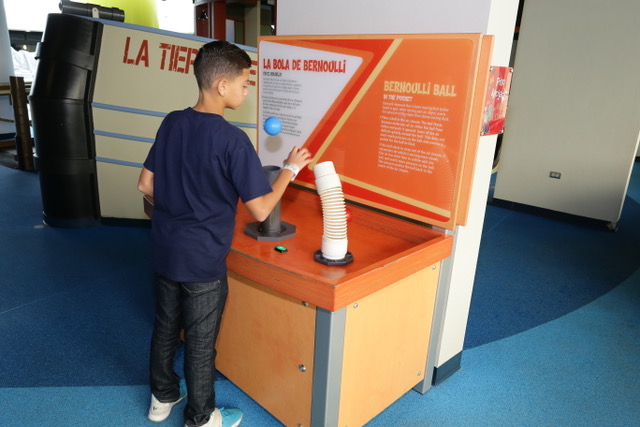
A retired commercial jetliner is a perennial favorite and is a big draw, giving kids access to all parts of an airplane, including the cockpit, that are normally off-limits to fliers.
There is a playground that is open to all, a go-kart track and special areas designated to celebrate your birthday or special event.
THE MINI ZOO
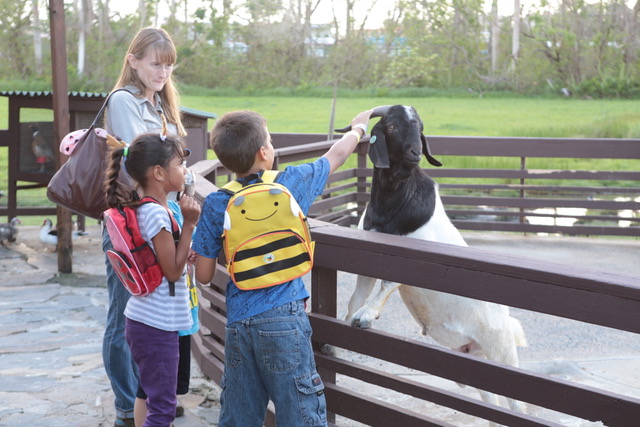 The Mini Zoo provides a natural scenario to observe, touch and even to feed the different species that live in the museum. With more than 20 different species of farm and exotic animals, the Mini Zoo will give you an unforgettable experience while you learn about nature, animals and their habitat.
The Mini Zoo provides a natural scenario to observe, touch and even to feed the different species that live in the museum. With more than 20 different species of farm and exotic animals, the Mini Zoo will give you an unforgettable experience while you learn about nature, animals and their habitat.
The Jungle Trip
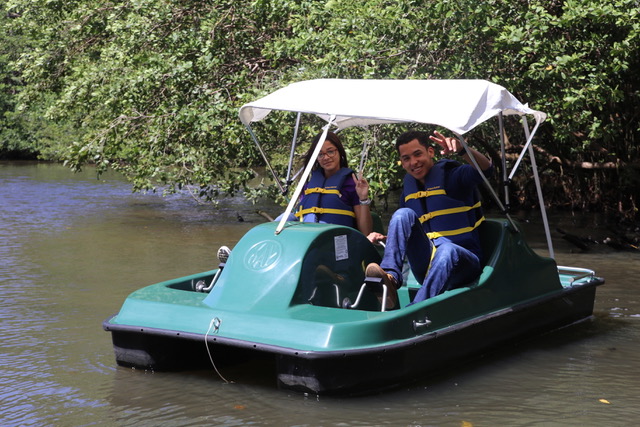 Enjoy an eco-friendly journey through the Blasina Lake, part of the San Juan Bay estuary that surrounds our beautiful museum. You will explore the flora and fauna that lives in this area. You can take a guided boat ride in one of our “Paseadoras”, or you can tour among the lake in one of our paddleboats.
Enjoy an eco-friendly journey through the Blasina Lake, part of the San Juan Bay estuary that surrounds our beautiful museum. You will explore the flora and fauna that lives in this area. You can take a guided boat ride in one of our “Paseadoras”, or you can tour among the lake in one of our paddleboats.
Casa Bacardi A trip through history and innovation
Puerto Rico is synonymous with rum. From the pirates who plied their trade in the surrounding seas over past centuries, through the once-mighty sugarcane industry and into the pulsing nightlife that marks the modern metropolis, the celebrated spirit runs through the island’s rich history and continues to hold sway to this day.
“We want you to have fun while learning about rum, soak up the beautiful view and to experience everything new we have to offer.”
Puerto Rico is synonymous with rum. From the pirates who plied their trade in the surrounding seas over past centuries, through the once-mighty sugarcane industry and into the pulsing nightlife that marks the modern metropolis, the celebrated spirit runs through the island’s rich history and continues to hold sway to this day.
None more so than Bacardi, the iconic brand and standard-bearer that has conquered the world from its outpost at the western edge of San Juan. Known as the King of Rums and the Rum of Kings, the treasures inside those iconic bat logo bottles found in fine establishments in the far corners of the world took flight at the company’s distillery in the seaside town of Cataño, an up-coming diamond in the rough that proudly proclaims itself home to the globe’s best-selling premium spirit.
Rum is where Caribbean cool meets tropical heat. And while an air of mystery and adventure has always surrounded the spirit, Casa BACARDI pulls the curtain back a bit on the Caribbean’s famed libation and throws open its doors to visitors for a range of tours. Tickets can be purchased online months in advance or on site.
Reaching Casa BACARDI’s 127-acre campus is a breeze. Hop on the ferry in Old San Juan for a quick crossing of the deep water bay that is short on price but long on million-dollar views. Taxi cabs and Uber are also both sure bets and vacationers with rental cars will find the trip out is headache free – an exit here and a turn there and you’ve arrived.
Christened the Cathedral of Rum by former Gov. Luis Muñoz Marin in the middle years of the last century, the sprawling bayside property is the largest premium rum production facility in the world.
Head through the gates and along the palm-lined and pond-fringed drive to the bat-winged visitors Bat Bar Pavilion, a soaring open-air creation of Spanish architect Felix Candela that was built in 1962. With a steady schedule of tours on tap, you won’t have to wait long to get started – although what’s the rush to leave the waterfront bar that serves up a fresh supply of renowned Bacardi-based cocktails including the iconic Cuba Libre, must-have Mojitos, potent rum punch and delicious Daiquiris. Kick back and take in the sights, which include epic views of the Spanish-colonial ramparts of El Morro.
All Casa Bacardi options are fully bilingual, educational and experiential, mixology and rum tasting particularly set for adults-only.
The Historical Tour can be fun for all ages. It starts with a complimentary cocktail for adults before climbing on board an open-air trolley for a guided tour that uncovers the family-owned company’s history of craft and innovation. Out of the trolley and into the air-conditioned Visitor Center is both a step back in time and a glimpse into a cutting-edge future that stays true to the vision of quality established by Don Facundo Bacardi, a Spanish-émigré who after years of experimenting with distilling rum in his adopted hometown of Santiago, Cuba started his first distillery there – producing his signature light and elegant spirit — at the same time the Civil War was raging in the United States.
While rich in history, Bacardi has never been satisfied with resting on its laurels. A clear case in point is the ongoing evolution of its Casa Bacardi, which since its opening in 1961 has continued to tantalize visitors a true rum paradise. The addition of the highly rated mixology and in-depth rum tasting tours are proof positive of Bacardi’s unquenchable thirst to outperform expectations at every turn.
“Casa Bacardi needs to be on your Puerto Rico bucket list. We want you to have fun while learning about rum, soak up the beautiful view and to experience everything new we have to offer. Be our guest and come have a Mojito where rum was created,” said Wesley Cullen, Casa Bacardi’s general manager.
While staying true to Don Facundo’s standards and its Cuban roots, political upheaval and the promise of progress prompted the family to pull up stakes and head to Puerto Rico, the sister island that was, and remains, Bacardi’s springboard to the world.
Visitors can put together the pieces of the rich Bacardi legacy through museum pieces that include century-old copper distilling posts, bills of sale and the very furniture on which the course of the company was charted into its seventh-generation. Follow the evolution of Bacardi’s bottles and branding – all with the bat logo that was adopted early on at the suggestion of Don Facundo’s wife Amalia Moreau as a tribute to the fruit bats, symbols of good fortune that nested in the tin-roofed distillery – into a glamorous art deco bar where guides walk through the company’s growing range of rums.
On the adults-only side of the spectrum is Casa Bacardi’s Rum Tasting Tour, a guided tour that covers the history of the company while also diving deeply into the process behind the creation of Bacardí’s celebrated rums from the fermentation of the molasses, the crafting of its aging barrels and blending of its signature offerings. This is not a look but don’t touch kind of tour as it includes expert tutelage and tastings of five Bacardi rums, including Legacy, another blend available exclusively at Casa Bacardi.
If that’s still not enough of a hands-on experience, opt for the Mixology Tour, a truly interactive thrill that puts visitors behind the bar as a Bacardi specialist pulls, pours and shakes them through the paces of mixing three classic rum cocktails. With cocktail-culture booming, this tour is a must for those looking to unleash their inner bartenders. It also includes the distillery visit to uncover the history and craft that goes into those rum recipes that are being learned – cheers indeed.
The gift shop is packed to the gills with all-things Bacardí – from hats to shirts to Mojito mixing sets. It is there that visitors can take the tour to the next level with a one-of-a-kind experience bottling their own Casa Bacardi Special Reserve complete with name, date and wax seal. Aged in white oak barrels and finished in sherry casks, the sweet aromatic rum with tones of vanilla, fruit, hazelnuts and almonds – can only be found onsite.
In short, the Casa Bacardi tour is a can’t miss trip for any traveler. Think of it as an easily doable microcosm of Puerto Rico itself, which at roughly 100 miles long and 35 miles wide packs a plethora of memories in a relatively small but potent package.
Like Puerto Rico, Casa Bacardi is sun drenched and soaked in history, accessible with an ever-present hit of intrigue.
If you can dream it, Puerto Rico can make it happen
Puerto Rico is a perfect place for beach lovers to kick back with their feet in the sand, their faces in a book, and a cool drink within easy reach. The simple pleasures of basking in the sun surrounded by the sea may sound like an ideal way to pass the day for some visitors.
An endless array of high octane activities for thrill-seekers of all ages
Puerto Rico is a perfect place for beach lovers to kick back with their feet in the sand, their faces in a book, and a cool drink within easy reach. The simple pleasures of basking in the sun surrounded by the sea may sound like an ideal way to pass the day for some visitors.
But that’s simply not always going to cut it for the growing number of adventurous travelers drawn to the island by its ever-expanding range of activities that are guaranteed to get the blood pumping of any adrenaline junkie.
These days there is no shortage of high-octane options for thrill-seekers of all ages. So whether it’s soaring above a tropical forest, surging down a mountain stream, or skimming along the waves, intrepid trekkers that arrive with a thirst for adventure can rest assured that Puerto Rico will quench it and keep them coming back for more.
At roughly 100 miles long and 35 miles wide, Puerto Rico provides a plethora of spine-tingling possibilities from coast to coast and everywhere in between.
Many a salty soul has made the pilgrimage to this ocean-sports mecca – which boasts a maritime menu of options that run the gamut from challenging the wild waves of the northwest coast to stalking big billfish along Marlin Alley and from jet-ski jaunts through mangrove islets along the south coast or cay-hopping by catamaran off the eastern edge and over the offshore island towns of Vieques and Culebra.
But the fun doesn’t begin and end around the water’s edge. More and more adventure-seekers are looking inward, to Puerto Rico’s still untamed and untapped mountainous interior. The forested mountains that make up the backbone of the island are home to an ever-expanding array of activities. Though often not in easy view, this rugged terrain is studded with stuff to do.
A great way to get the adrenaline meter moving is a trip to Toro Verde, a 320-acre ecological adventure park in Orocovis, a small town that crowns the island’s verdant central mountain range. The drive up is a treat itself, but it’s the traverses along multiple zip lines (from mild to wild), ropes courses, suspension bridges, and rappels that fuel the fun factor to new heights. Let out your inner animal on attractions with names like the Beast, the Bull Maze, and the Monster, which at 8,300 feet is certified by Guinness World Records as the “longest zip line in the universe.” The numbers attached to this monstrosity don’t lie – think flying at speeds of up to 95 miles per hour over the length of 28 football fields at heights of more than 1,200 feet.
Fuel up in the onsite café, wind down at the highly-popular restaurant, and pop in to the souvenir shop for a shirt that lets the folks back home know you took on some truly epic zip lines.
The fact is, Puerto Rico has been at the forefront of the zip line craze and now boasts a ton of alternatives guaranteed to get anyone’s engines zooming from zero to 60 in no time.
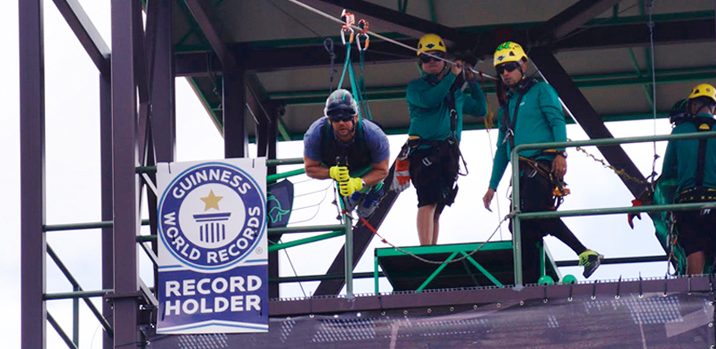
Nearby is the Toro Negro State Forest, an 8,000-acre expanse that reaches into the municipalities of Ponce, Jajuya, Orocovis, Ciales, and Juana Diaz. Toro Negro is Puerto Rico’s highest cloud forest and boasts the island’s highest lake and its three uppermost peaks, topping out 4,400 above the Caribbean Sea, and Atlantic Ocean, both of which can be seen on clear days. The forest tracts include nearly a dozen miles of trails, an observation tower, campgrounds, and picnic areas and swimming holes, known locally as charcos, in cool mountain streams.
Combine culture and cool at La Piedra Escrita, a massive boulder in an Orocovis stream that is etched with hieroglyphs carved by the Tainos, the island’s indigenous inhabitants at the time of the arrival of Columbus on his second voyage to the New World. A long boardwalk leads down to the rock-lined stream and La Piedra Escrita, or the Written Rock, provides a great perch to plunge into the clear and cold water.
To the east, the azure Atlantic and crystalline Caribbean give rise to the palms-studded flanks and emerald ramparts of the El Yunque National Forest, the only tropical rainforest within the U.S. national forest system. Touring by automobile offers some truly stunning scenery, but the best way to uncover this often cloud-shrouded gem is by hiking along one of the various established trails that snake through it. Meander down through the steamy jungle to soak in a natural pool created by a cascading waterfall, washing away any fatigue and providing rejuvenation for the walk back out of the woods.
Yunke Zipline Adventure offers five zip lines and a rappelling course along the forested flank of the El Yunque foothills in Luquillo, a northeast coastal town that is also home to stunning beaches, and an iconic string of food kiosks. Safe, fun, and scenic is Yunke’s mantra. Keep your eyes open as the area is home to a riot of local flora and fauna.
Want to jump right into the action? Why not leave the logistics to one of Puerto Rico’s top of the line providers? Dragonfly Adventures has been generating buzz for decades at its Carabali Rainforest Park, a 600-acre ranch at the base of the El Yunque Rainforest that offers multi-generational activities including horseback riding, mountain biking, all-terrain vehicles, and go-karts. Don’t skip the onsite steakhouse. The tour owner and operator has since expanded beyond the ranch and now boasts offsite venues, restaurants, an event production company, and a hotel.
Sitting off the edge of Puerto Rico’s northeast coast, and within view of El Yunque, are the offshore island towns of Vieques and Culebra. Take the ferry over from Fajardo, a small coastal city that also serves as a launching pad for catamaran and sailboat trips to sandy and palm-lined cays that rise up out of some of the best snorkeling waters in the Caribbean. The fun doesn’t need to end after dark. That’s when the Laguna Grande bioluminescent bay starts to shine, with microscopic organisms known as dinoflagellates light up the lagoon. Conservation-minded kayak tours are the way to go, ensuring that the glow does not wear off for future generations.
Puerto Rico boats three bioluminescent bays and the ones in Fajardo and nearby Vieques are among the world’s brightest.
Nothing says Caribbean getaway clearer than touching down off a secret beach in a seaplane. Seaplanes in Paradise will get you where you want to go, even if you never knew that place existed. Established full-day and half-day self-guided and guided packages are available to explore every angle of Puerto Rico including trips to the offshore islands of Culebra and Culebrita and combined seaplane/catamaran excursions. Don’t hesitate to go custom as the company’s motto is: If you can dream it, we can make it happen.
While adventurous travelers will welcome the fast-paced play in Puerto Rico, they may well find that their vacations went by too quickly. Make the most of precious time by taking advantage of the adventure that is even lurking in and around San Juan. While it revels in its well-deserved reputation as the culinary, cultural, and nightlife capital of the Caribbean, Puerto Rico’s capital city and surrounding environs are by no means a concrete jungle. Sure there are wild times to be had amid the hustle and bustle, particularly after the sun goes down, but the light of day reveals a spectrum of ways to play.
Soak up the sights in sky-high style, and achieve maximum liftoff in a helicopter tour. Imagine hovering over the Spanish-colonial ramparts of Old San Juan with views of the capital’s stunning beaches and flashy financial district. Puerto Rico Helitours offers flights ranging from five minutes to half an hour in the capital. Or take off from the mountain town of Barranquitas, where skilled pilots will fly you into the rarely seen Dos Bocas and San Cristobal canyons.
Vertical Solutions offers charters and a range of half-day and full day tours of spots including the Arecibo Observatory, the Camuy Caves, Toro Verde, and the offshore islands of Culebra and Vieques. Clients can also customize flights.
Staying high and dry is fine, but sometimes you just need to get wet. Why not combine the sky and water with a kite-surfing session. Tap into the wind and the waves at 15 Knots, which offers gear rentals and lessons in Isla Verde, an area that has earned a reputation as a world-class destination for the hot sport of kiteboarding. GoodWinds Watersports & Kitesurf Center in Dorado is also always a good bet. Take advantage of top flight services including gear rental, lessons, radio coaching, and guided tours. Aren’t ready to harness up and hang on? No worries, as the shop also offers guided surf tours that can include jet-ski jaunts to empty outer reefs off Dorado’s stellar coastline.
San Juan is also home to a series of surf breaks to suit everyone from novices to kamikazes. Lessons and board rentals are readily available at Pine Grove Beach in Isla Verde. More seasoned surfers can fill their stoke factors at spots like La Punta in the heart of Condado or La Ocho, a fabled break at El Escambron Beach that may well be among the best truly urban surf breaks this side of Waikiki.
The epicenter of Puerto Rico’s stellar standup paddleboarding is the clear and calm Condado Lagoon, a tranquil place to stay or a base to launch forays into the San Juan Bay or out into the azure Atlantic.
Adventurous anglers will fall hook, line and sinker for the fabulous fishing in and around the capital city. The San Jose Lagoon and Torrecillas Lagoon, interconnected mangrove lined estuaries that provide world-class tarpon grounds, with specimens of the so-called Silver King reaching up to the 100-pound range. There’s still plenty of room for snook, jack crevalle and other sought after sportfish in this inshore saltwater paradise. Or leave the lures behind and tour the liquid maze by kayak, standup paddleboard, or power boat. Either way you’ll be treated to a thriving ecosystem that sits in silent shadow of the international airport, your revelry interrupted only by the jumping of fish, the splash of dive-bombing pelicans and the occasional rumble of a 747 jumbo-jet coming in for a landing.
Rally the whole family for an easy trip to La Marquesa, a 600-acre passive and adventure park at the forested-edge of San Juan, and just 15 minutes from the capital city’s tourism hubs of Condado and Isla Verde. From cable cars, trolleys, and canopy tours to zip lines and rock-climbing, there’s family fun on tap for everyone from five to 95. The ski-lift style cable car is a unique way, especially in the Caribbean, to reach a 70-foot observation tower that offers stunning views of the metropolitan area.
Another can’t miss option is Ecoquest Adventures & Tours, a conservation-minded company that specializes in organizing excursions well within striking distance of San Juan. Hotel pick-up lets clients leave any transportation troubles behind, allowing them to focus purely on fun options including zip lines, rappelling down waterfalls, canopy bridges, and off-road vehicle treks through Puerto Rico’s lush and often overlooked backcountry.
Head south out of San Juan, through Caguas and up to Cayey; the gateway to Carite State Forest, which spans 6,000 acres and is managed as a recreation area by the Puerto Rico government. Camping and picnic areas are safe and scenic. Waterfalls and cool natural stream pools, including the beautiful Charco Azul, can be found.
Combine a Carite excursion with a pit stop at the Guavate area of Cayey, where open-air eateries serve up heaping helpings of criollo classics. Their specialty is lechon, whole spit-roasted hogs that are as delectably moist and tasty on the inside as they are golden and crackling on the outside. Guavate is small, but is not to be missed. You may not even need a map to find it, just follow the scent of the simply stunning victuals being prepared at this favorite grub hub of locals and visitors alike.
Rocaliza Adventure Tours, headquartered in the city of Caguas about 30 minutes south of San Juan, serves up half-day and full-day tours near that Carite State Forest that include canyoneering, hiking, rappelling, and multiple zip lines. Climb upriver using secured reports and then rappel 80-feet down the El Salto waterfall among others.
Ready for rock climbing? Seasoned guides will lead rock hounds of all levels up classic routes at the island’s best crags and boulders, most of which are close to the capital city.
Another great place to get your kicks is in karst country, as the foothills that sweep up from the northwestern coast to the central mountain range are known. The region is marked by limestone outcroppings known locally as mogotes, which create a labyrinthine landscape that is lush and mysterious.
Abundant rainfall and subterranean rivers have carved out porous limestone to create an unseen world of cave systems throughout the karst region. Cueva Ventana, or Window Cave, is one such hidden gem. Climb PR-10 up by car from the coastal plain at Arecibo until you spot the bare bones sign for the cave. A short trek up the woods leads you to the somewhat steep scramble down into the cave. The cave itself is not expansive and its geological features are not the real draw. What keeps visitors draws dropping is the end of the cave, which is essentially a massive opening high up on a sheer limestone cliff that provides incredible views of the bucolic Rio Grande de Arecibo Valley below while the harmless denizens of the dark chasm, in this case bats, flutter overhead.
Take in the vista for as long as you like, but keep your eyes open. It’s a long way down. And you’ve still got some fun waiting just up the hill at Lago Dos Bocas, a mountain reservoir tucked hard in the hills in neighboring Utuado. The fishing is good, but you don’t need to count on catching anything to fill your belly. A few excellent restaurants dot little pockets of the shore and are accessible only by water taxi service, making getting there have the fun as ospreys glide on thermals overhead.
Karst country is also home to the Camuy Caverns River Park, a government-run attraction that takes people deep into an underground world of subterranean rivers, stunning stalactites and stalagmites, and strange creatures. Trolley trains do much of the work but there are opportunities to get out and stretch your legs on walks through soaring caverns.
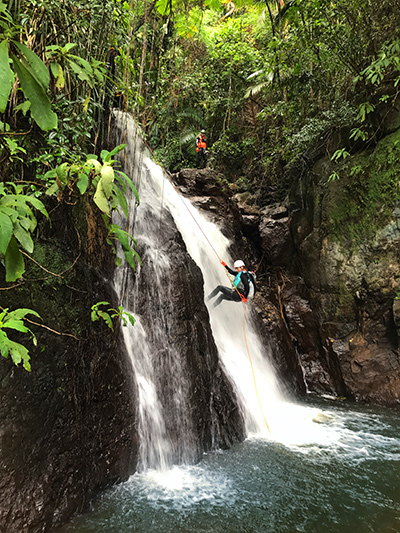
Chart a course for the Tanama River, a cool, clear mountain stream that twists, turns and plummets down from the high-country between Arecibo and Utuado, the heart of Puerto Rico’s remote, rugged and unspoiled karst region and home to one of the few wild populations of the endangered Puerto Rican Parrot. Hidden treasures are revealed at virtually every turn along the river. Hiking in the area is sure to please, but this is one epic adventure that is best enjoyed by jumping in with both feet. Body rafts and inner-tubes are without a debt the best way to explore the caverns, overhangs and rapids of this refreshing liquid trail that traverses through lush jungle
Book a trip with the fun and knowledgeable guides from Explora Multiaventura, Tanama River Adventures or Canyoning Puerto Rico which developed into the first excursion company to offer guided tours to the island’s canyons, cascades and canyoning routes; who will handle logistics, gear and safety.
Bold travelers need not be bound to the ground in Puerto Rico, where the sky is the limit when it comes to kicks. The small airport in Arecibo is home base for sky-diving operators. Learn the basics on the ground and then gear up for a free-fall as butterflies flutter in your belly. Wheels up and in the air to 10,000 feet, it’s time to take the leap. The tandem jump with a certified instructor is a true rush.
Flights of fancy are also on tap in the karst region at the Arecibo Observatory, a massive radio telescope sunken into the top of a mogote. The hands-on visitors’ center provides a glimpse of the important science that continues to be done at the scientific installation. Let your imagination soar as onsite researchers probe the outer reaches of the galaxy.
Make that dream of soaring like a bird come true by learning to hang glide or paraglide. The experienced USHGA-certified instructors at Team Spirit Hang Gliding offer a full range of courses on the art of free flight. Don’t have time to master the sport? Don’t worry. Take a tandem flight with a seasoned pilot. From the launch site on the south side of El Yunque Rainforest, your pilot will work the glider into uplifts and thermals, circling higher and higher. With flights lasting up to 30 minutes and reaching heights of more than 2,500 depending on the weather conditions you are in for the ride of a lifetime and views of the mountains, Atlantic Ocean, and even San Juan, you’ll never again have to wonder what it feels like to soar with the clouds.
Out west, world-class waves have lured legions of hard-core surfers to the island’s northwest corner for decades, but beginners can easily find lessons given by skilled teachers who will get them into the right spots and onto their feet riding swells in no time. Horseback riding along the beach, snorkeling in the protected Tres Palmas Marine Reserve, or scuba diving in the pristine and crystalline waters off uninhabited Desecheo Island or Mona Island are other facets of the northwestern region that make it shine like a beacon for the saltiest of souls. Standup paddleboard excursions along the rarely traveled Guajataca River or inner-tube tube float trips down the Isabel irrigation channels.
Continue down the coast to the Cabo Rojo area, where you can fly fish on the flats, hike along a salt march or head offshore for truly epic deep-sea fishing.
Down and around are the coastal towns of Guanica and Lajas, which are sure to seduce with off-the beaten path adventures to secret beaches and mangrove islets surrounded by bathtub clear waters that are as warms as they are inviting.

Ponce, the so-called Pearl of the South, is known as the cultural hub of Puerto Rico’s south coast, with a restored downtown area and art museum that can hold its own with some of the more celebrated heavyweights around the globe. It’s also where you can catch a ferry ride out to Caja de Muertos, or Coffin Key, an uninhabited nature refuge that serves as a breeding ground for sea turtles and once served as the stage for Masonic meetings outside of the disapproving eyes of the Spanish crown. Swim with a kaleidoscope of marine creatures and trek through the cactus-studded dry forest to the 1887-Spanish colonial lighthouse that caps this idyllic offshore hideaway.
Adventure-seekers could literally throw a dart at a map of Puerto Rico and probably hit on something, somewhere that would surely get their juices flowing. A good time is guaranteed, whether setting of on your own, or opting for a guided excursion, as the island surrounds you with opportunities to push boundaries up in the mountains, down below ground, along epic coastlines, under water and high in the sky.
Either way, it should be abundantly clear that Puerto Rico serves up an endless array of adventures for travelers of all ages. So many that the Enchanted Island could also be called the Excitement Island.

